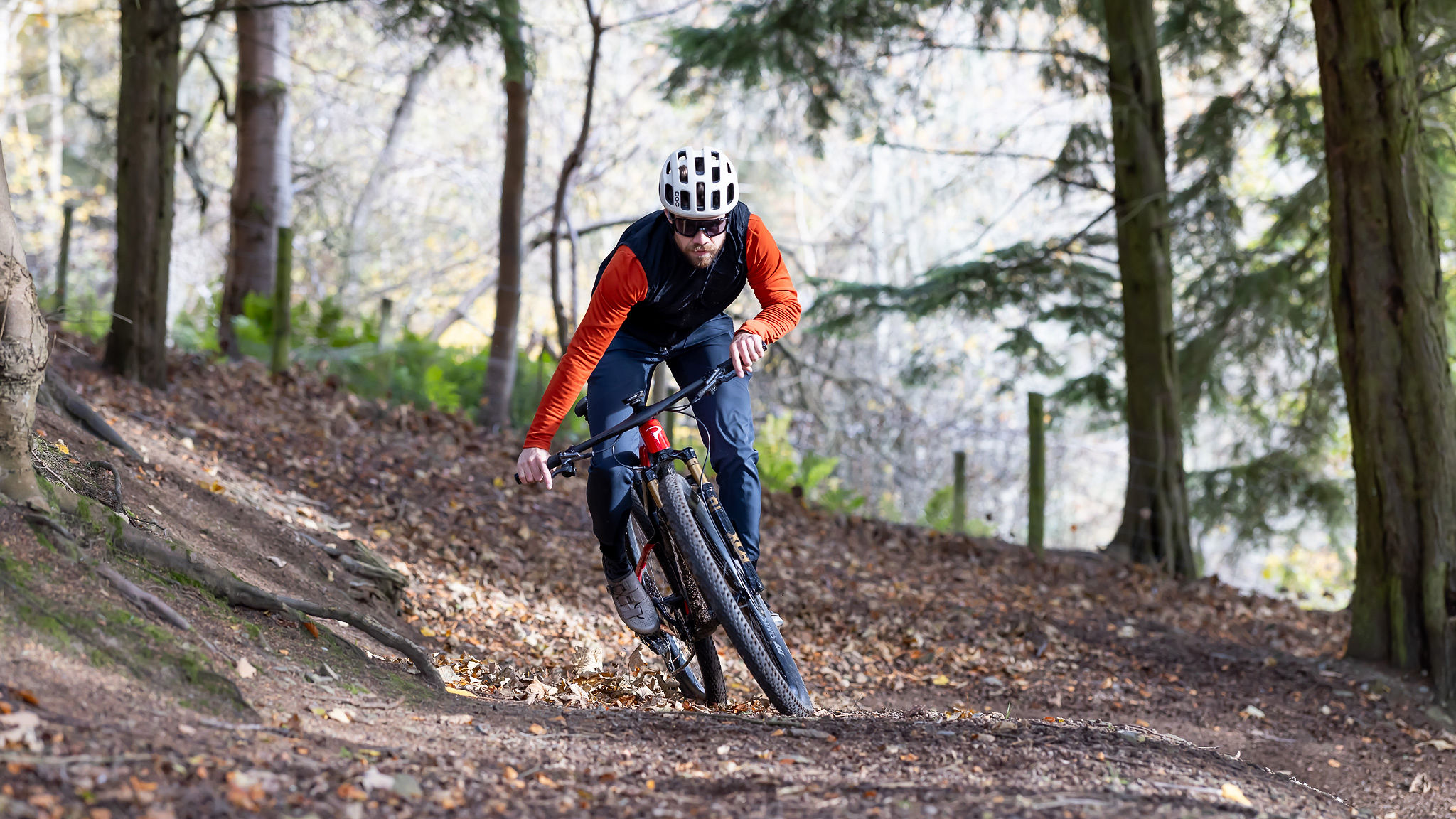Best gravel shoes – we test 10 top off-road shoe options for racers and explorers
The best gravel bike shoes that will make your pedaling more efficient so you can ride faster and longer in comfort

The best gravel shoes are unsurprisingly, generally based on the best mountain bike shoes, but as the gravel explosion continues there are detailed design, performance, and styling differences appearing that are more influenced by pure road cycling shoes.
Our test team has put the best gravel shoes through their paces on a range of roads and trails and our round-up includes comfortable adventure shoes with simple lace-ups through to custom moldable carbon-fiber monocoque, double-dial secured gravel race shoes. Our best shoe overall is the Rapha Explore and our top budget choice are the Specialized Recon 1.0.
All the gravel shoes here are designed for use with off-road clipless pedals – which are definitely the pedals we'd advise using on a gravel bike. However, if you're a new rider who really doesn't feel confident clipping in, you could run MTB flat pedals in which case you may want to look at the best MTB flat pedal shoes, but we'd really advise going clipless if you can.
Read on to find your perfect pair, and if you're not sure, check out our buying advice and FAQs on the best gravel shoes at the bottom of this article.
Best gravel shoes
Why trust BikePerfect
The quick list
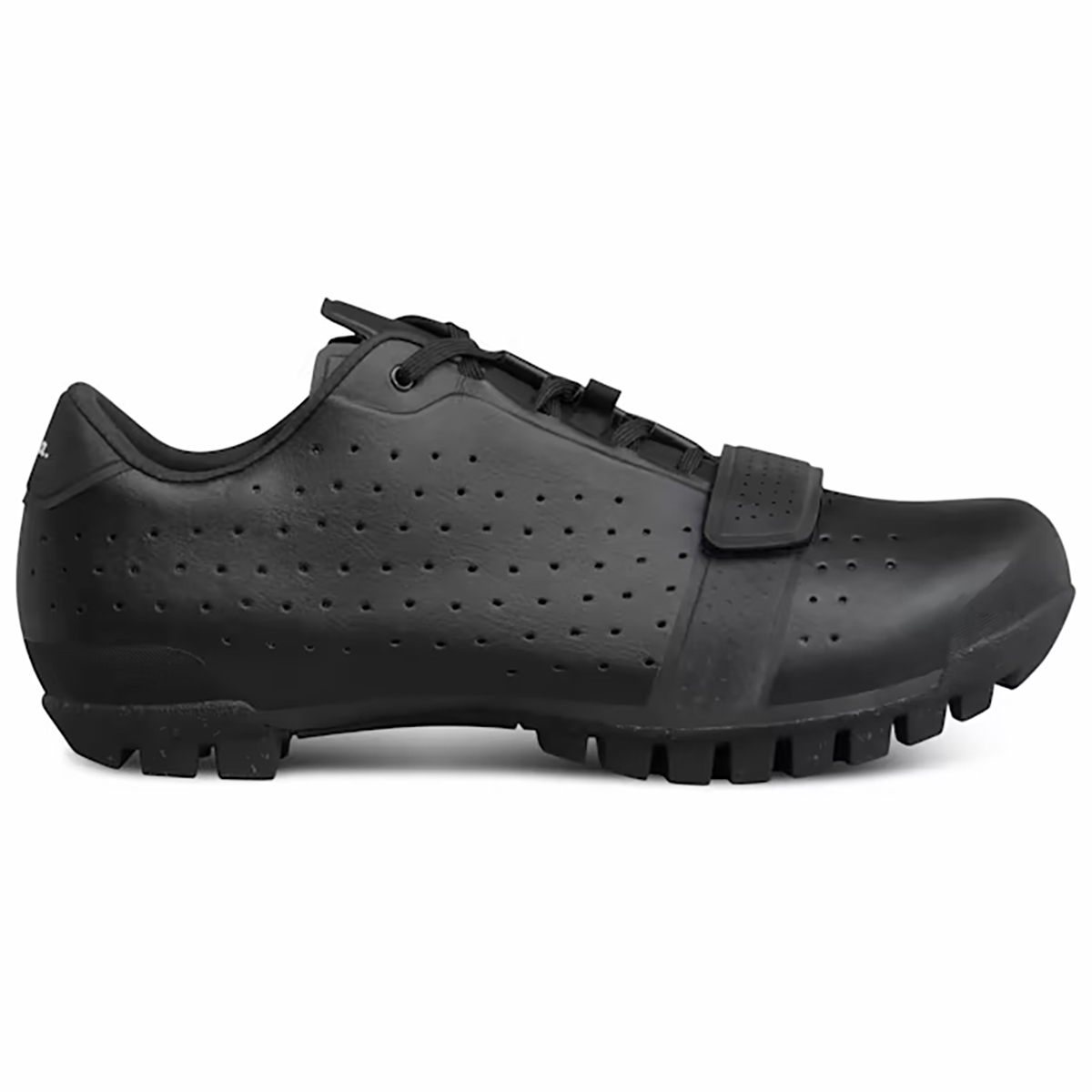
A first-class shoe for rugged trails
A near-perfect gravel shoe that blends on-bike performance with off-the-bike comfort.
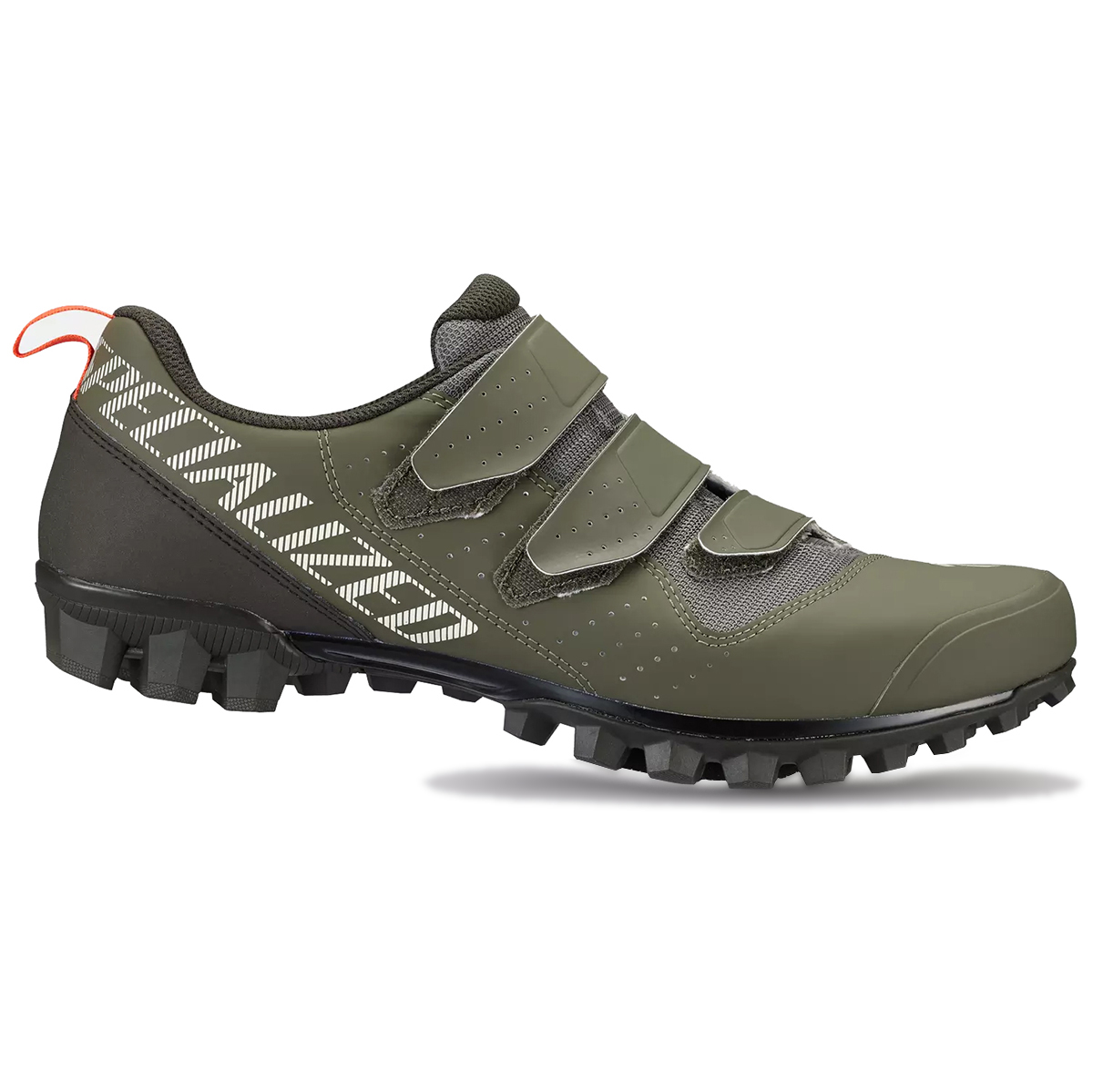
Entry-level but no shortage of features
A simple, comfortable take on the gravel bike shoe concept with sticky aggressive tread.
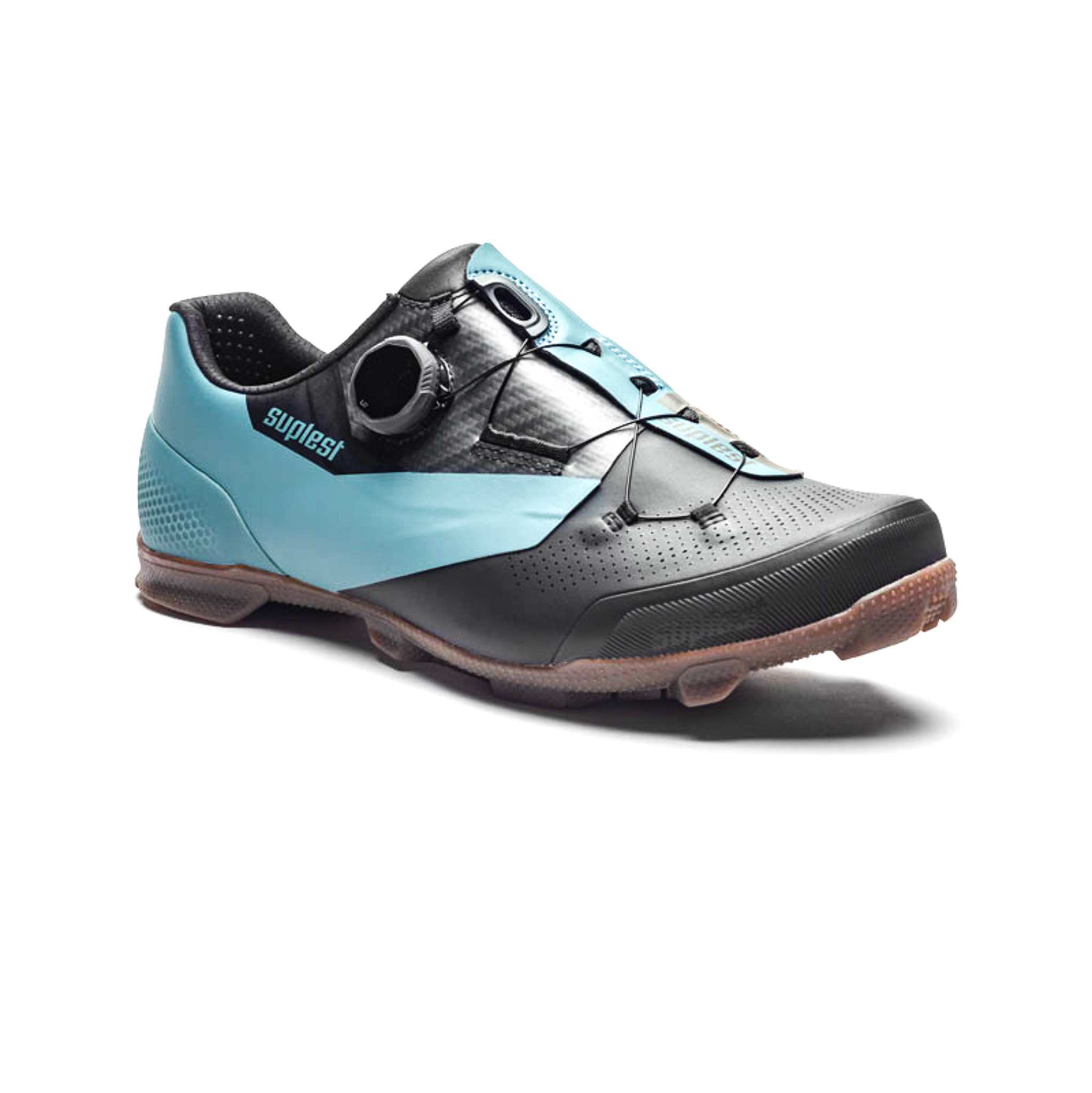
Excellent all-terrain, all-day comfort
A versatile gravel shoe with a wider fit that's super comfortable on and off the bike.
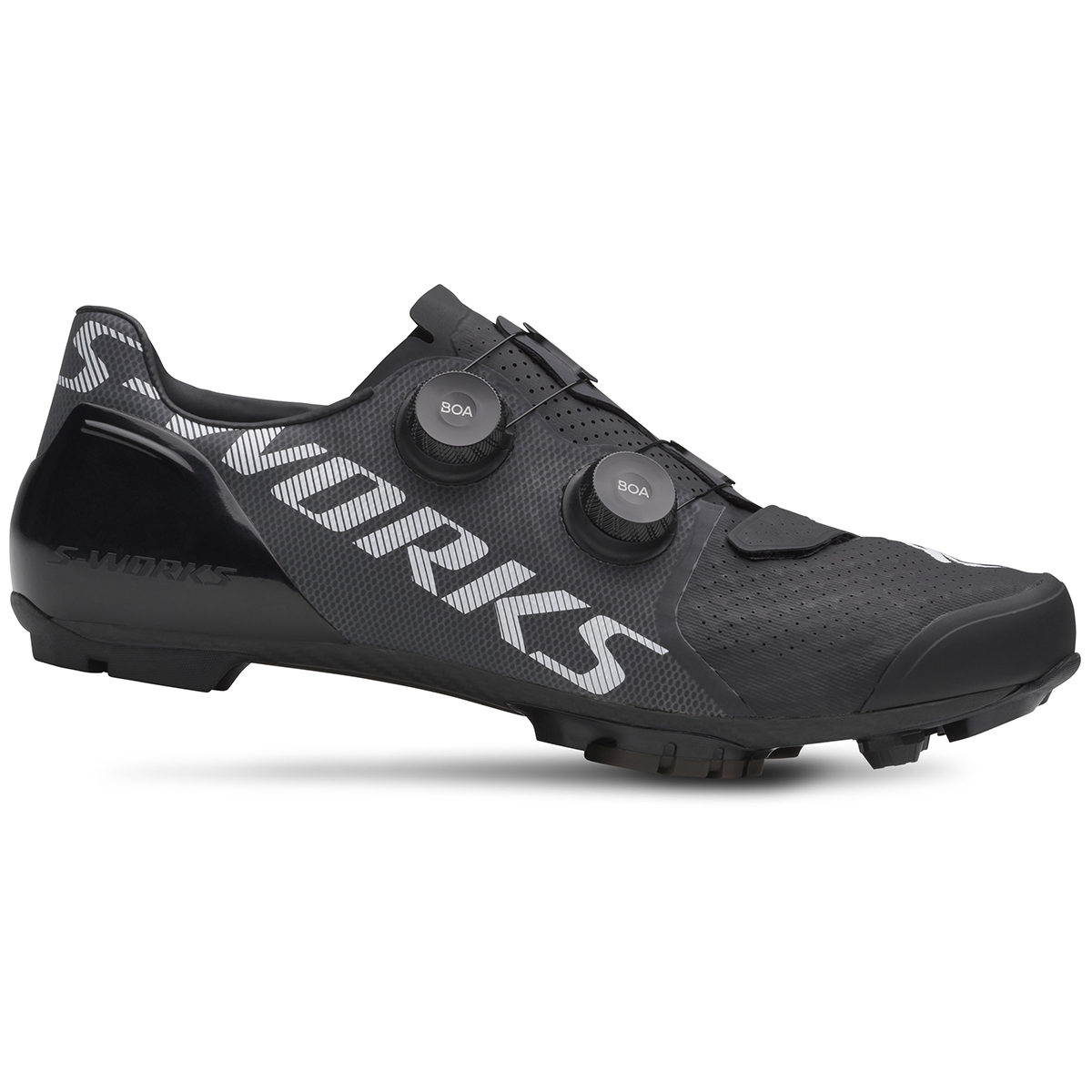
Lightweight and backed up with superb power transfer and comfort
A brilliant lightweight gravel shoe, with a great fit, all-day comfort and an ultra-stiff carbon sole.

The Fizik Ferox Carbon delivers all-round gravel performance
The Ferox Carbon offers excellent fit and comfort and is equally impressive on fast rides and long days out too.
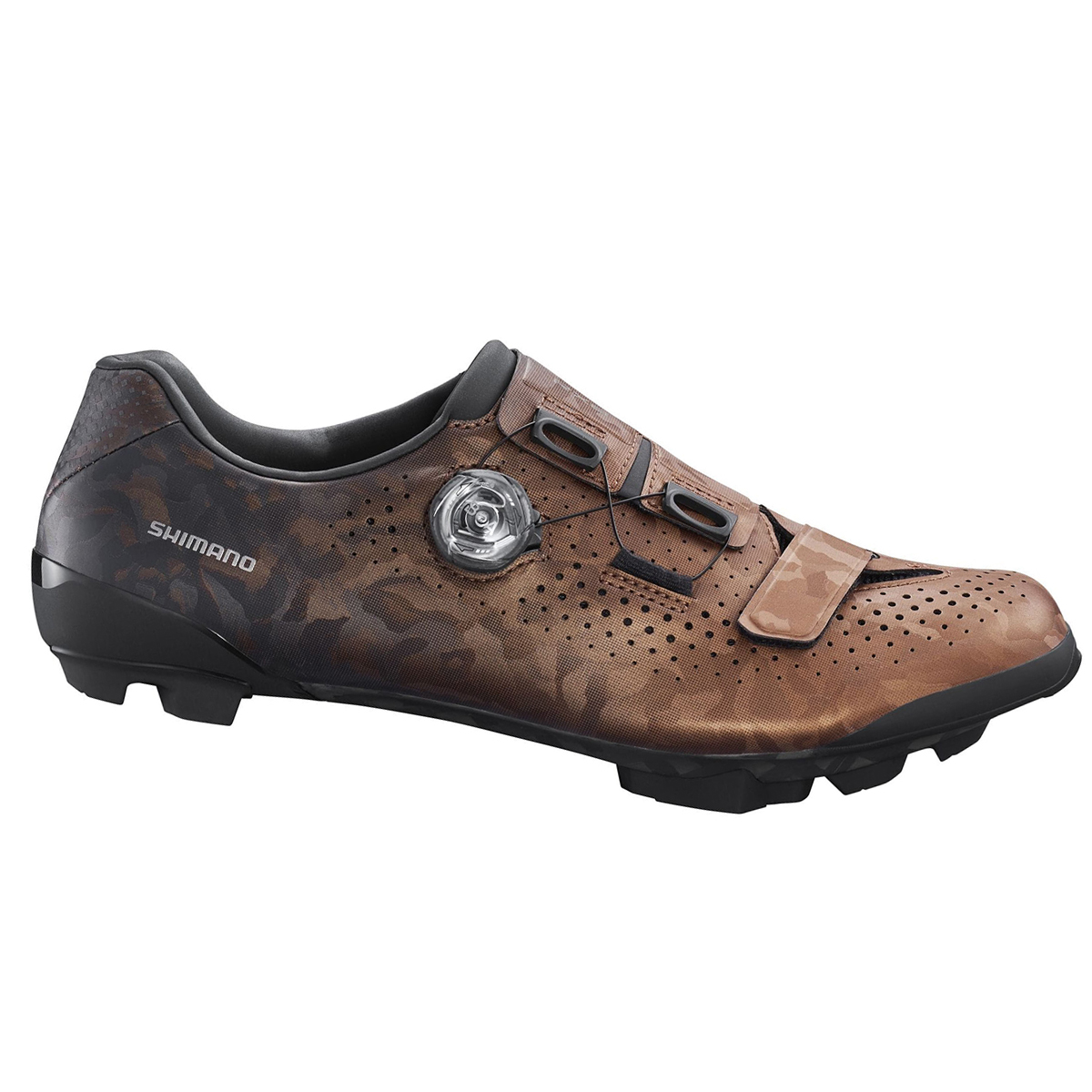
A superb stiff shoe for gravel racing
Stiff and lightweight, the Shimano RX8 is a solid choice for gravel racing.
See the next 4 shoes ↓
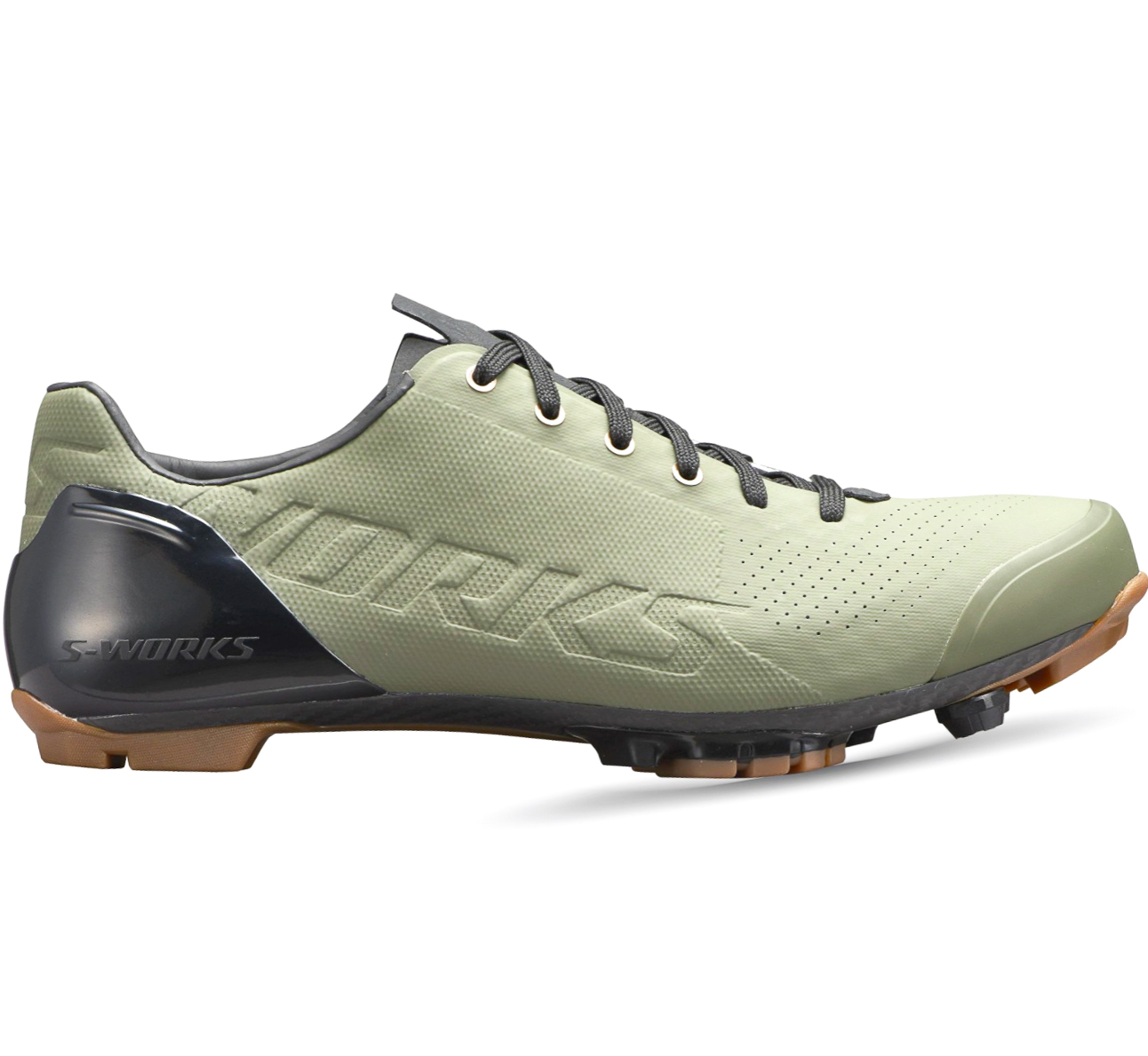
S-Works performance and style in a classic laced gravel shoe
Specialized's S-Works Recon Lace shoes are loaded with performance features ready for gravel racing and have a timeless laced shoe look
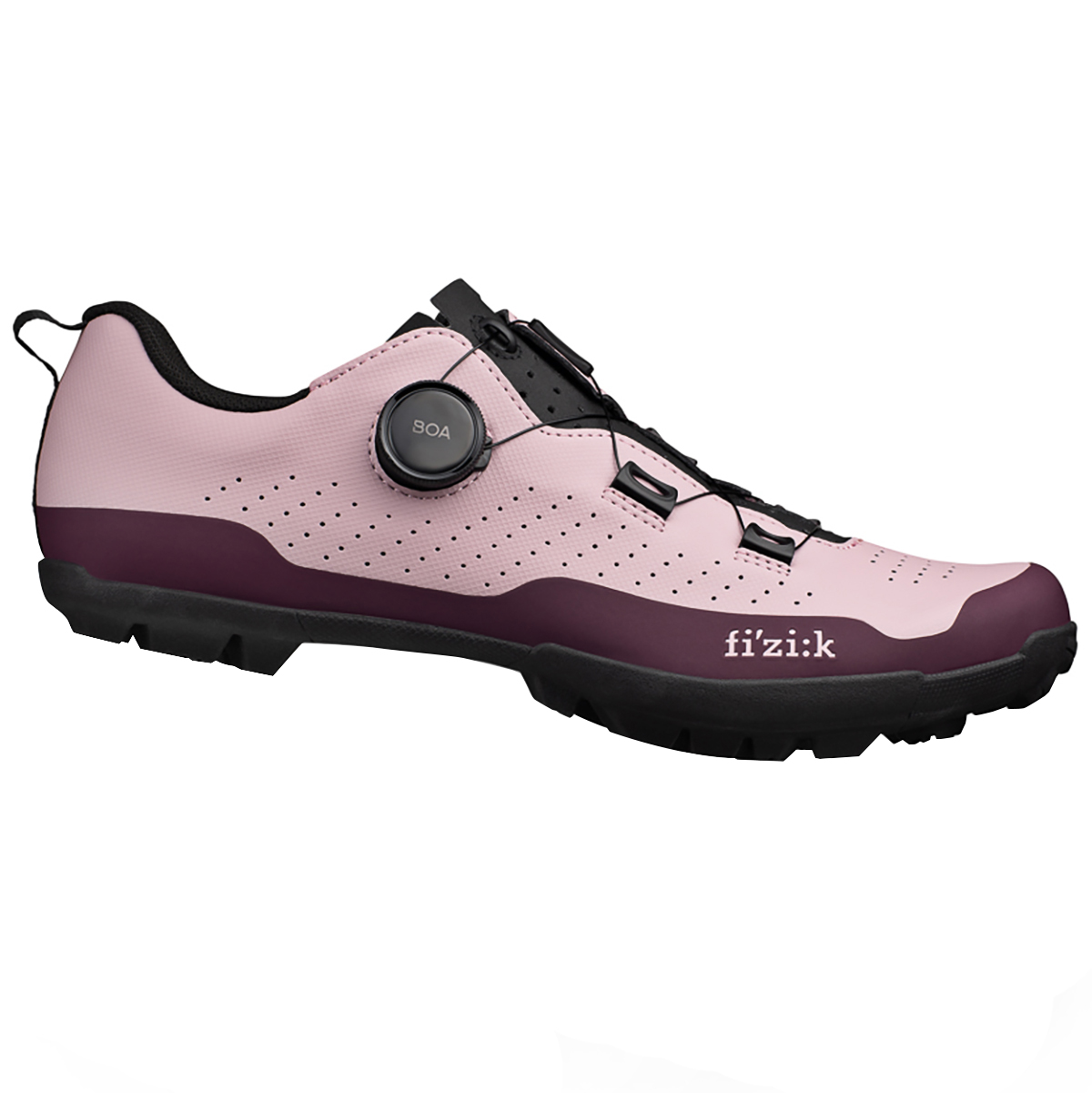
Ready for the best gravel bike adventures
The Fizik looks great but backs it up with great ride quality and is a superbly versatile gravel shoe
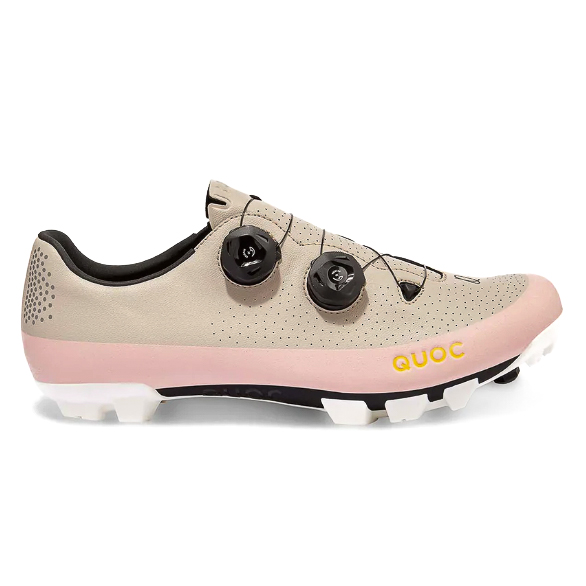
Flawless performance with summer riding vibe looks
After four years of modifications since its release the Gran Tourer XC is now a brilliant, off-road summer adventure shoe.
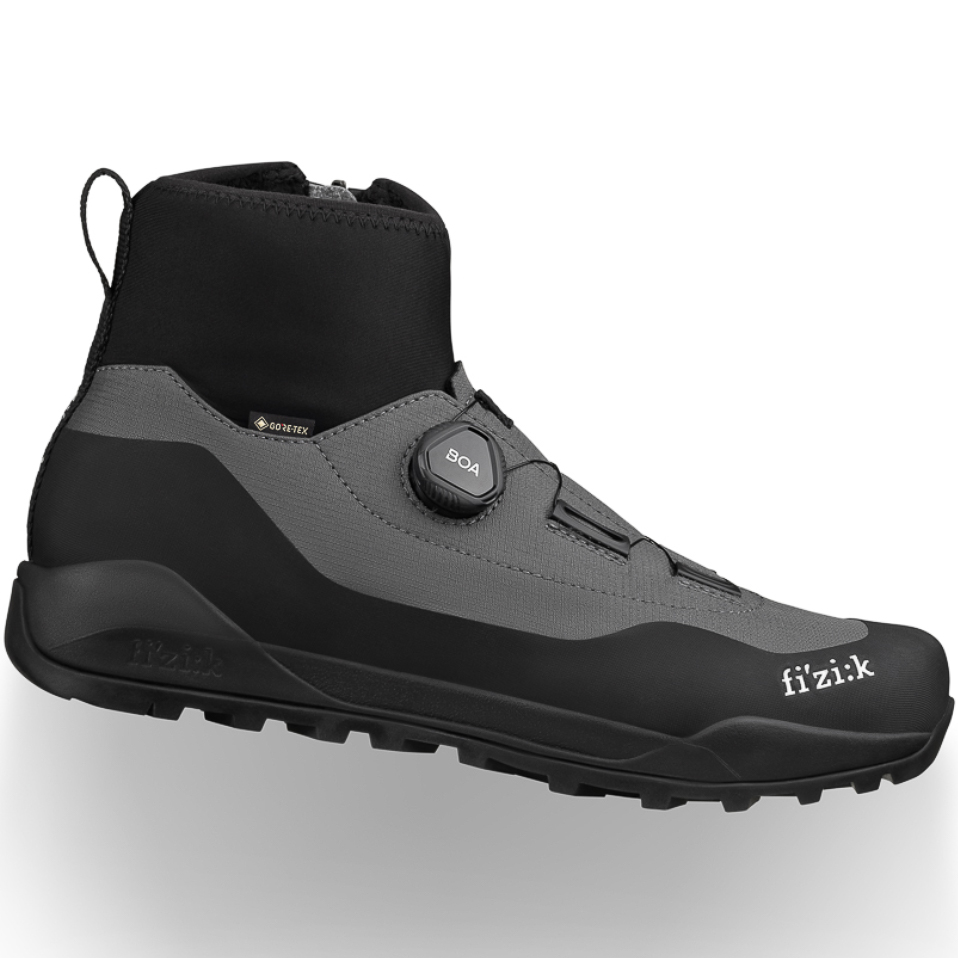
Ready to tackle everything winter riding can throw at it
A great balance of easy walking, grip, warmth and waterproofing.
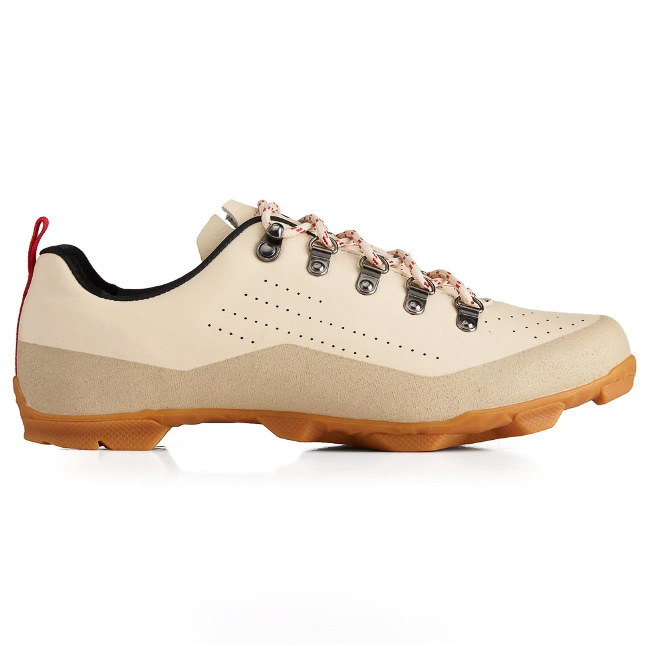
Stylish looks backed up with performance features
The Cafe du Cycliste Outlands shoes aren't just about good looks, they also pack a spec to back up their cool gravel vibe.
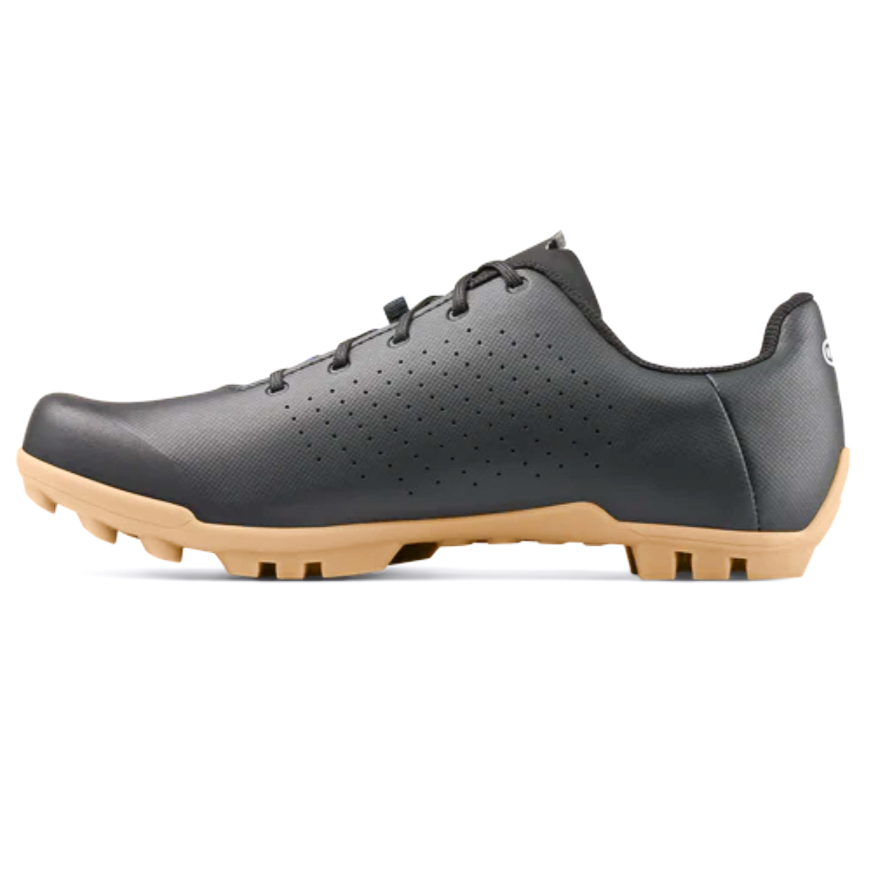
Supreme comfort in a great all-round shoe
The Crankbrothers Candy Lace shoes are comfortable and deliver a great all-round performance.
1. Best overall
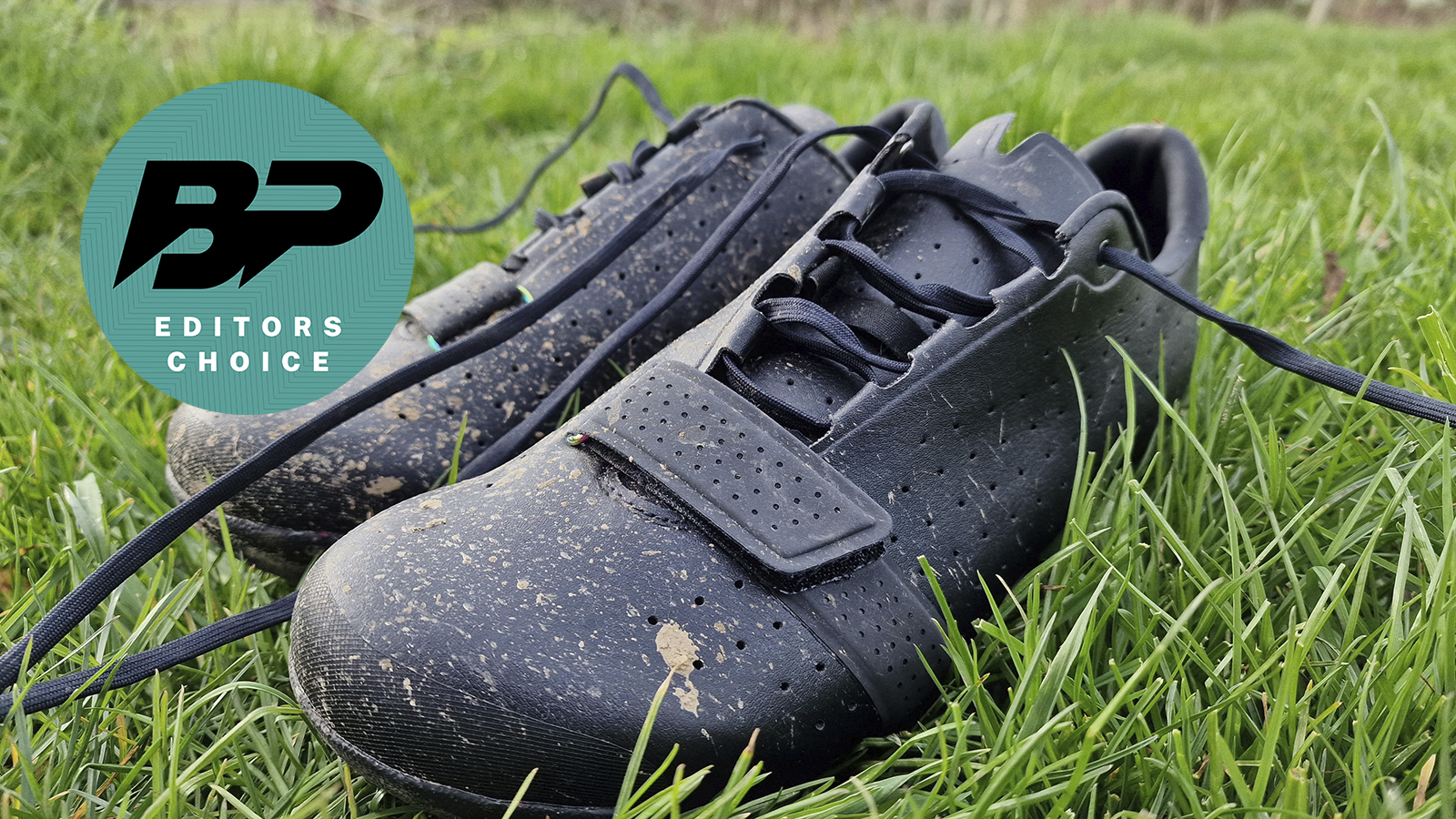
Specifications
Reasons to buy
Reasons to avoid
The perfect gravel bike shoe might just exist in the Rapha Explore, it tops our best list with a perfect score, and on review, our tester Dean Hersey said, "If you are looking for a premium, tough, grippy-and-durable shoe with classic styling, then you will struggle to beat these from Rapha."
The Rapha Explore was the first in-house-developed Rapha off-road shoe and they’re a solidly stylish option for all types of gravel riding. The only slight negative we found on the Rapha Explore was the out-the-box stiffness of the synthetic leather, which took Dean a few weeks of riding to 'bed in' the shoes, and he said "Your patience while breaking in will be rewarded with a supremely comfortable shoe, and the high-quality materials and construction means that these should go the distance and last many years."
One of the real highlights is the fit and closure on the Explore, Rapha has opted for a laced closure system, similar to the Café du Cycliste Outlands with the added benefit of a padded Velcro strap too. That might not sound like the most technically advanced option, but we found the double-wall lacing system, designed in conjunction with the velcro strap and padded tongue worked extremely well.
Check out our full Rapha Explore gravel shoe review to find out why it's our go-to for gravel riding.
| Attributes | Notes | Rating |
|---|---|---|
| Comfort | Super comfy once the synthetic leather is broken in | ★★★★ |
| Grip | Impressive levels of grip | ★★★★★ |
| Fastening | Laced and strap fit system works perfectly | ★★★★ |
| Breathability | Perforated upper gives plenty venting | ★★★★★ |
| Value | Costly but well worth the outlay | ★★★★ |
2. Best budget
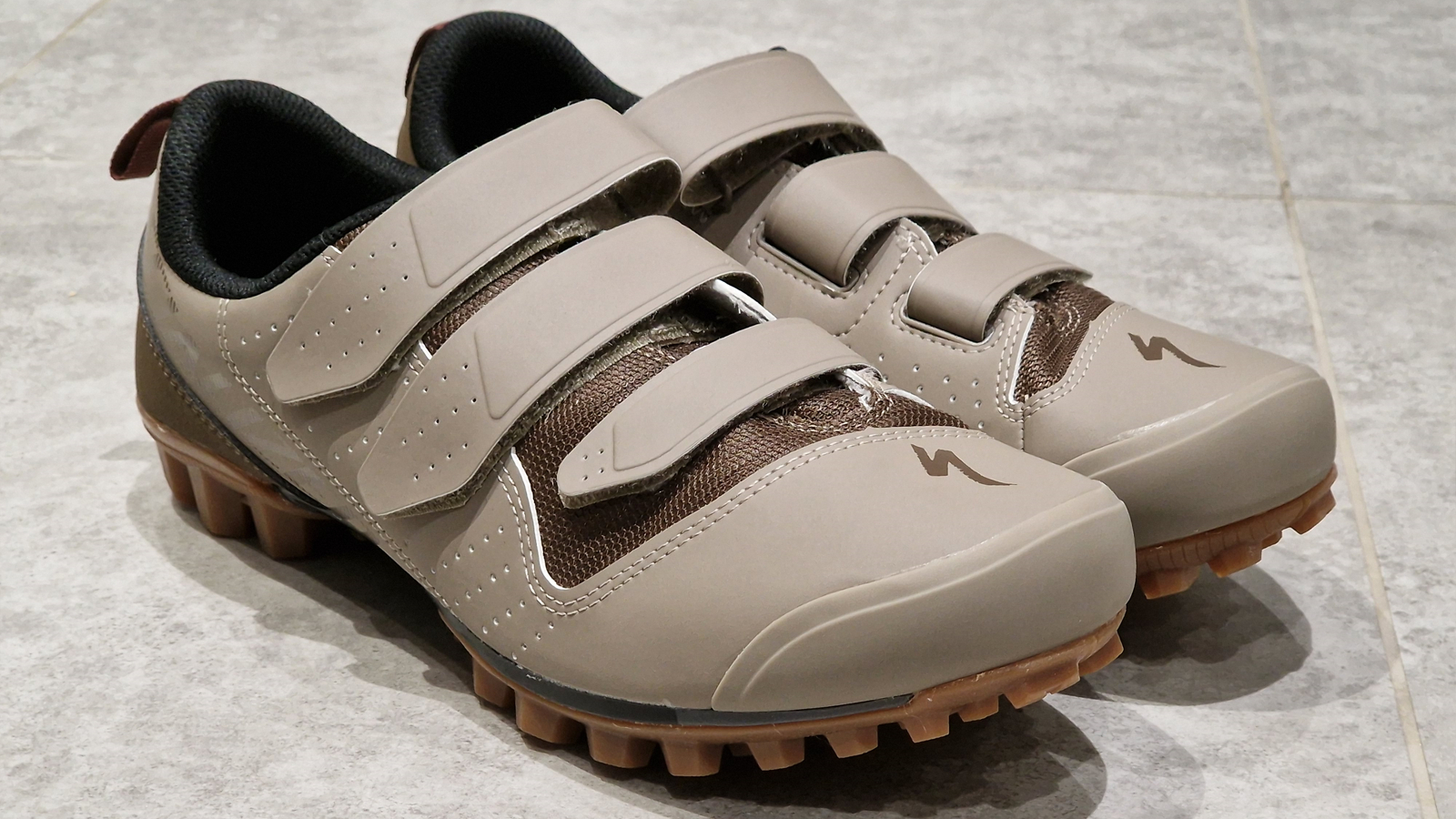
Specifications
Reasons to buy
Reasons to avoid
Boa dials are great for micro-accurate tightening and a high-tech feel on your feet, but some riders just want simplicity and that’s where the Specialized Recon 1.0 gravel shoe comes into its own.
This tremendous value gravel shoe shares the same TPU-injected nylon sole as the more expensive Boa dial-equipped Recon 3.0 shoe – which is another highly recommended off-road shoe from Specialized. The budget-friendly 1.0 gives decent pedaling stiffness but with enough foot flex for comfortable walking. You also get a super aggressive mountain running shoe style tread in grippy SlipNot rubber so walking is never an issue.
The multi-piece synthetic leather upper includes a chunky toe box and a reinforced heel wrap for a naturally comfortable cradling fit and the accurate fit means the three Velcro wrap-over straps don’t get over-stressed either and tightening or loosening couldn’t be easier at any time.
The simple Velcro design also makes them lighter than average when compared to other shoes around the same price point.
Have a read of our Specialized Recon 1.0 gravel shoe review to find out more.
| Attributes | Notes | Rating |
|---|---|---|
| Comfort | Minimal padding isn't the best | ★★ |
| Grip | The Slipnot tread works well | ★★★ |
| Fastening | Low-tech Velcro does the job | ★★★ |
| Breathability | Well vented for the price | ★★★★ |
| Value | Hard pushed to find a better value shoe | ★★★★★ |
3. Best for comfort
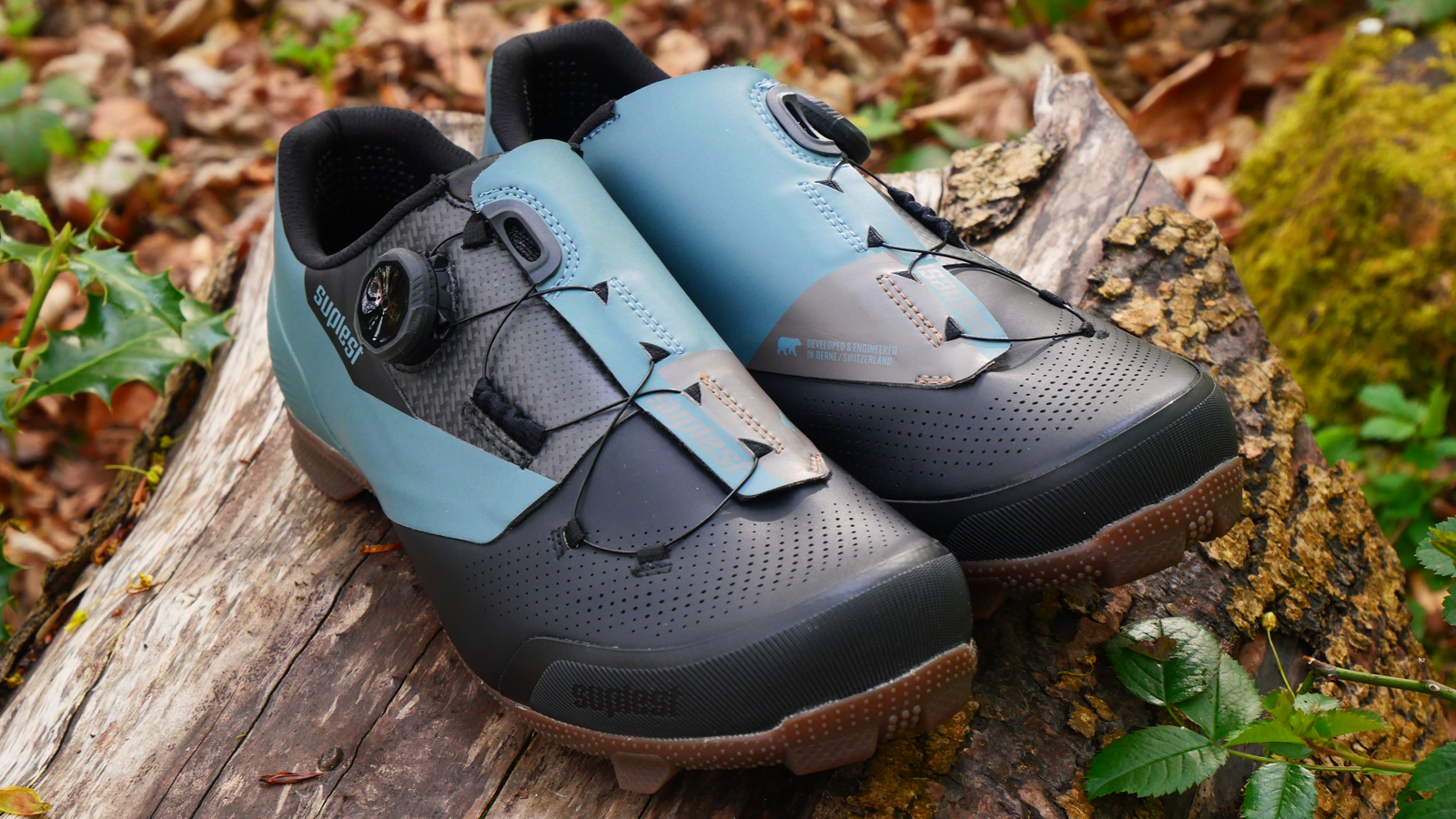
Specifications
Reasons to buy
Reasons to avoid
Suplest may be the best cycling shoe brand that you've never heard of. The Swiss brand is mainly focused on road shoes, but they also have several off-road specific models too from the best flat pedal mountain bike shoes to gravel.
The Mountain Performance shoe is its gravel shoe offering – featuring a stiff sole and a single Boa closure. The shoes are made from a microfiber outer material and lined with a softer mesh material. Around the front of the foot, they have a thin layer of carbon on the upper where the Li2 spec Boa is mounted, as well as one of the textile Boa lace guides.
Our tester, Graham Cottingham, found the Suplest Mountain Performance shoe to be probably the most comfortable gravel shoe he had ever ridden, with a very snug and secure fit, without any of the unforgiving tightness that usually comes with performance shoes. Comfort is enhanced with an even pressure across when tightened up. The gentler fit approach means they are a worthy contender for longer-distance gravel racing too.
Read Graham's Suplest Mountain Performance shoe review for a full overview.
| Attributes | Notes | Rating |
|---|---|---|
| Comfort | Sublime levels of comfort | ★★★★★ |
| Grip | Things get slightly slippy in the wet | ★★ |
| Fastening | The Anatomical Wrap delivers a perfect fit | ★★★★ |
| Breathability | Not a lot of venting | ★★ |
| Value | Expensive and there's a few performance issues | ★★ |
4. Best lightweight
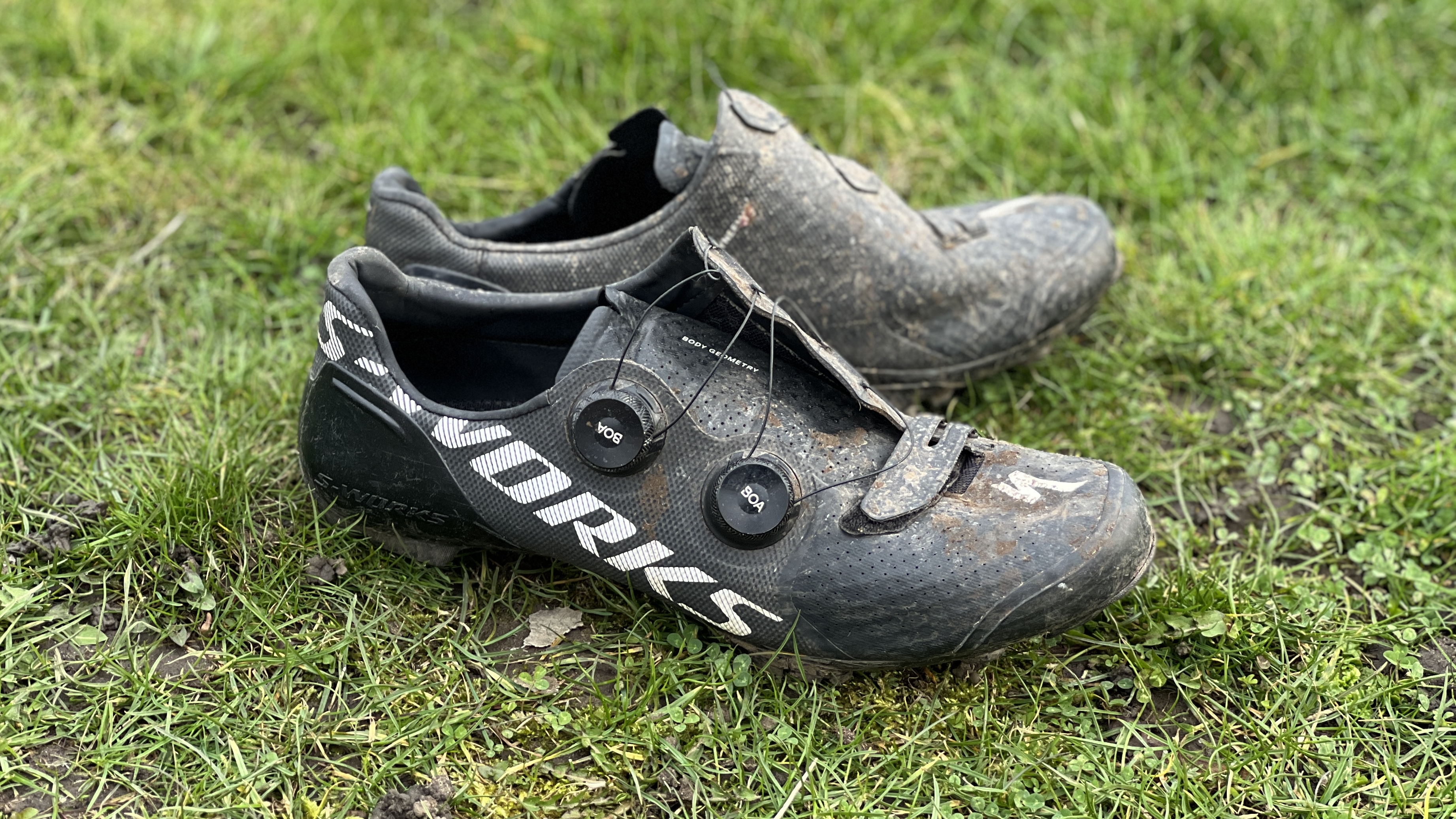
Specifications
Reasons to buy
Reasons to avoid
Specialized's S-Works Recon is a lightweight shoe ready to tackle any off-road riding from the best cross-country mountain bike racing to multi-day gravel riding adventures. They do carry a premium price tag, but having ridden these shoes for many years myself, the durability and performance make the cost more justifiable, and also made them a close contender for the title of best gravel bike shoe overall – the Specialized Recon shoe is simply superb.
This Specialized S-Works Recon has an ultra-stiff carbon sole. Rated as 13 on Specialized's stiffness scale, it's almost as stiff as the brand's premium road shoe. The stiff sole and close fit means hike-a-bike walking isn't the greatest in comparison to say the Fizik Terra Atlas, but I found they definitely aren't the worst if you need to hoof it up a short section.
The upper is made from a super light, zero-stretch material which creates a solid base for the two Boa S3-Snap dials to anchor and lock the foot in. Tightening or loosening micro-adjustments allow fine-tuning and the cables can be unhooked so it's easier to get the shoes on or take them off.
To find out more, read our Specialized S-Works Recon gravel shoe review.
| Attributes | Notes | Rating |
|---|---|---|
| Comfort | Body Geometry footbed is superbly comfortable | ★★★★ |
| Grip | Hard to find fault in all conditions | ★★★★ |
| Fastening | Velcro strap and double Boa is superb | ★★★★ |
| Breathability | Not the best for keeping feet cool | ★★★ |
| Value | Costly but well worth it | ★★★ |
5. Best all-rounder
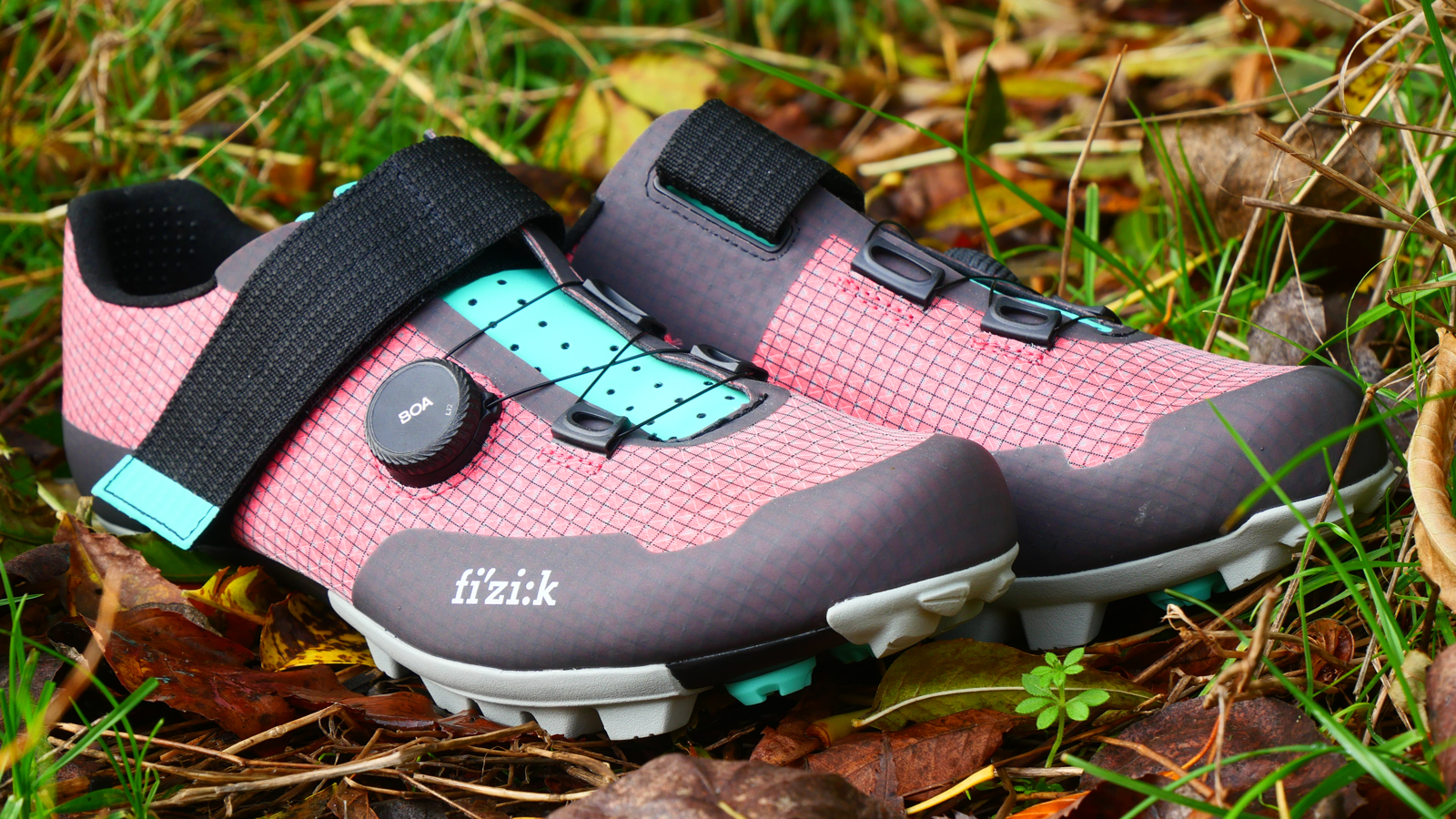
Specifications
Reasons to buy
Reasons to avoid
The Fizik Ferox Carbon gravel shoes are aimed at all-round performance off-road riding – whether it's gravel, XC or cyclocross. Fizik has certainly made a bit of a statement with the Ferox Carbons, the eye-catching aesthetic will certainly make you stand out on the start line of any of the best gravel events.
It doesn't stop at looks though and in his review our resident gravel shoe expert, Graham Cottingham, noted although it's unconventional, the Powerstrap configuration gave superb pedaling performance. What makes Fizik’s Powerstrap fastening unusual is that Fizik has positioned the Velcro strap above the Boa, which Graham found delivered an excellent and secure foot fastening with the Boa backing it up with accurate tightening and loosening.
Contributing to the all-round capabilities is the carbon sole which gives that excellent stiff-pedaling platform but still isn't harsh or fatiguing over longer or rougher rides. The outer sole is noticeably softer than many other gravel shoes and gives them good levels of grip which delivered well while hoofing the bike up a hill.
Read Graham's full review on the Fizik Ferox Carbon shoe for all the details.
| Attributes | Notes | Rating |
|---|---|---|
| Comfort | Powerstrap locks the foot in place well | ★★★★ |
| Grip | Rubberized mid-foot gives loads of grip | ★★★★ |
| Fastening | Boa and Velcro combo does the job | ★★★★ |
| Breathability | Perforations lets air circulate well | ★★★★ |
| Value | Pricey but hold their own against other performance shoes | ★★★ |
6. Best for gravel racing

Specifications
Reasons to buy
Reasons to avoid
The RX8 gravel shoes from Shimano are lightweight and race-ready and they have more in common with Shimano’s road range. To cement their racing purpose, Shimano recently released an RX8 Unbound Gravel special edition which was a tribute to the 'big boss' of gravel racing – Unbound Gravel.
As you would expect for a race-specific shoe they offer a super stiff carbon sole but also carry a relatively expensive price tag, and you won't be walking around the local coffee stop very well either, so not a wise choice for those keen on some hike-a-bike gravel riding. On test, our reviewer Dean Hersey also noted that "the super narrow fit and tread could increase the risk of a rolled ankle when walking."
However, the Shimano RX8s are a gorgeous looking piece of footwear and come into their own in the correct environment, which is gravel racing, and Dean was full of praise for the excellent fit saying, "When you first slip your feet in and twist the Boa dial you will notice how snug the RX8 and its wrap-around design fit is." and that, "Shimano had aimed to give ultimate comfort for ultra-endurance gravel racing events and the glove-like fit genuinely delivers."
Fit is on the narrow side so bear that in mind if ordering online and, at this price, we’d recommend sizing and buying from your local Shimano stockist just to be sure.
For more info, check out our full Shimano RX8 gravel shoe review.
| Attributes | Notes | Rating |
|---|---|---|
| Comfort | Made for all day racing and delivers | ★★★★ |
| Grip | The grip is shallow and narrow so not great in mud | ★★ |
| Fastening | Single Boa and Velcro delivers the goods | ★★★★ |
| Breathability | Synthetic leather and loads of perforations | ★★★ |
| Value | Performance racing comes with a hefty cost | ★★ |
7. Best laced
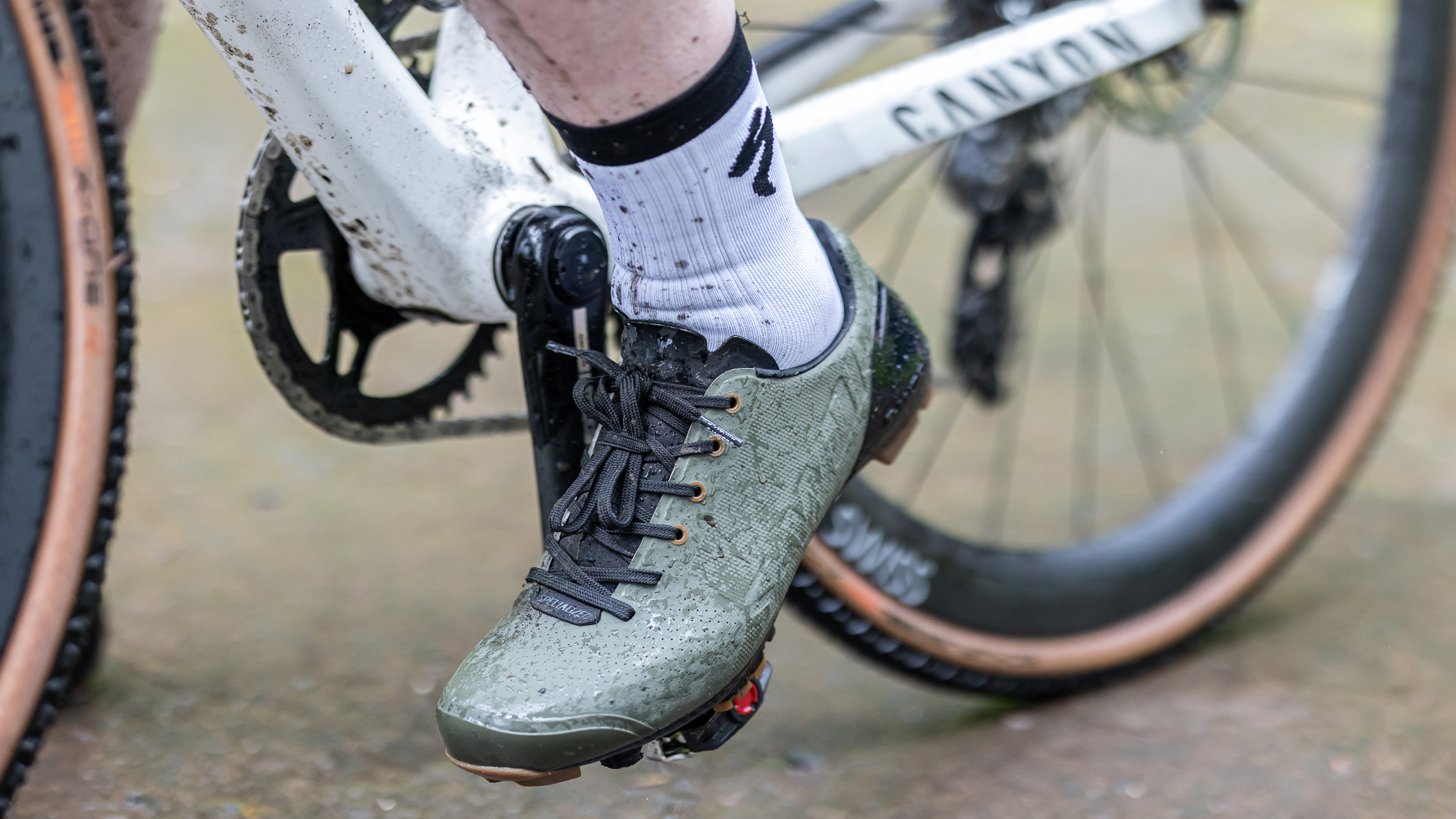
Specifications
Reasons to buy
Reasons to avoid
The Specialized S-Works Recon Lace like its Boa fastening sibling featured in this guide as the best lightweight gravel shoe and features a very similar spec and design. I reviewed these recently and found them to be a superbly capable gravel race-ready shoe packed with plenty of features that have made them a go-to gravel shoe.
The upper of the shoe is a one-piece Dyneema material which proved to be extremely durable shrugging off trail debris with ease and has remained damage-free. The Dyneema is also perforated for breathability which works well, but can result in wet feet when things get overall damp. The Recon also has added protection with a rubber toe cap at the front and a hard plastic heel cup at the rear.
The sole has plenty of Specialized 'SlipNot' rubber providing grip for moments when you need to push the bike. The 'SlipNot' material also extends from the rear between the heel and the cleat area giving grip and stability when walking on wet logs or climbing over a fence. I did find the exposed carbon scratched up quite easily, which was slightly annoying considering the cost.
Check out the full review of the Specialized S-Works Recon Lace for all the details.
| Attributes | Notes | Rating |
|---|---|---|
| Comfort | Robust and very comfortable | ★★★★ |
| Grip | Specialized 'SlipNot' sole is very sticky | ★★★★ |
| Fastening | The laced system delivers a refreshing alternative | ★★★★ |
| Breathability | Good but perferations let water in | ★★★ |
| Value | Premium S-Works price | ★★★★ |
8. Best for adventure gravel
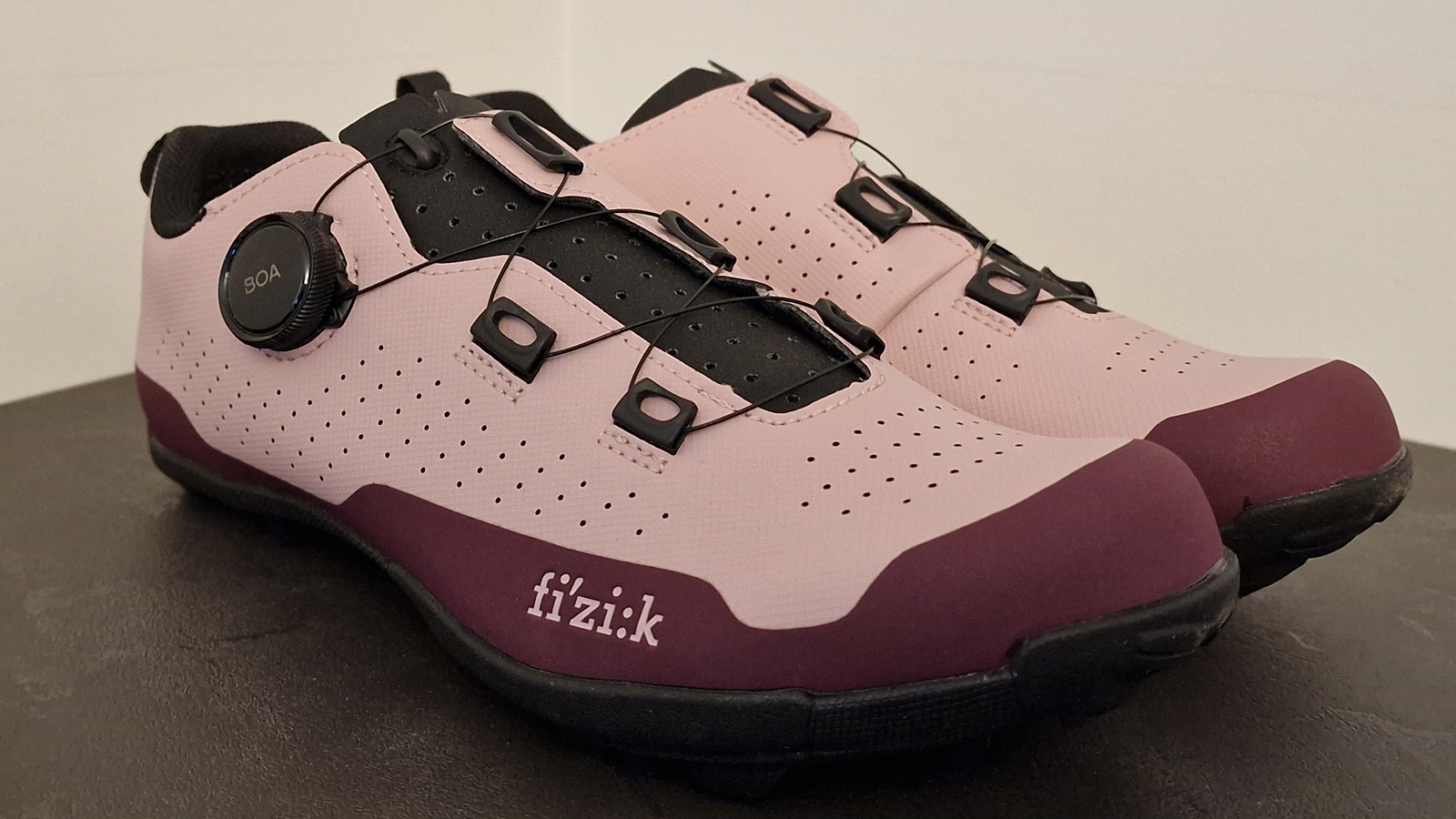
Specifications
Reasons to buy
Reasons to avoid
As soon as Fizik introduced the Terra Atlas to its off-road shoe range, it was one we loved straight away. The Terra Atlas not only looks good but it delivers great all-around features and is aimed at all manner of riding from singletrack to multi-day bikepacking adventures.
On test, we found the nylon sole to be better suited for the longest of days rather than hard-paced gravel racing and while it may not be the stiffest, the trade-off is for forgivingness over those big miles and for hike-a-bike moments. Fizik has reworked the tread pattern too, giving the Terra Atlas larger blockier knobs around the cleat and at the heel.
We have always had good experiences with Fizik's fit, although the fact there's no inner sole arch support included might not suit all riders straight from the box. They certainly come well-priced and our experiences with Fizik's durability have been totally positive.
Read our Fizik Terra Atlas gravel shoe review to find out more about these off-road all-rounders.
| Attributes | Notes | Rating |
|---|---|---|
| Comfort | Delivers all-day gravel comfort easily | ★★★★ |
| Grip | An excellently grippy compound rubber covers the sole | ★★★★ |
| Fastening | Single Boa simple but effective | ★★★ |
| Breathability | Loads of vent holes enable feet to breathe | ★★★★ |
| Value | Top marks for value for money | ★★★★★ |
9. Best for summer
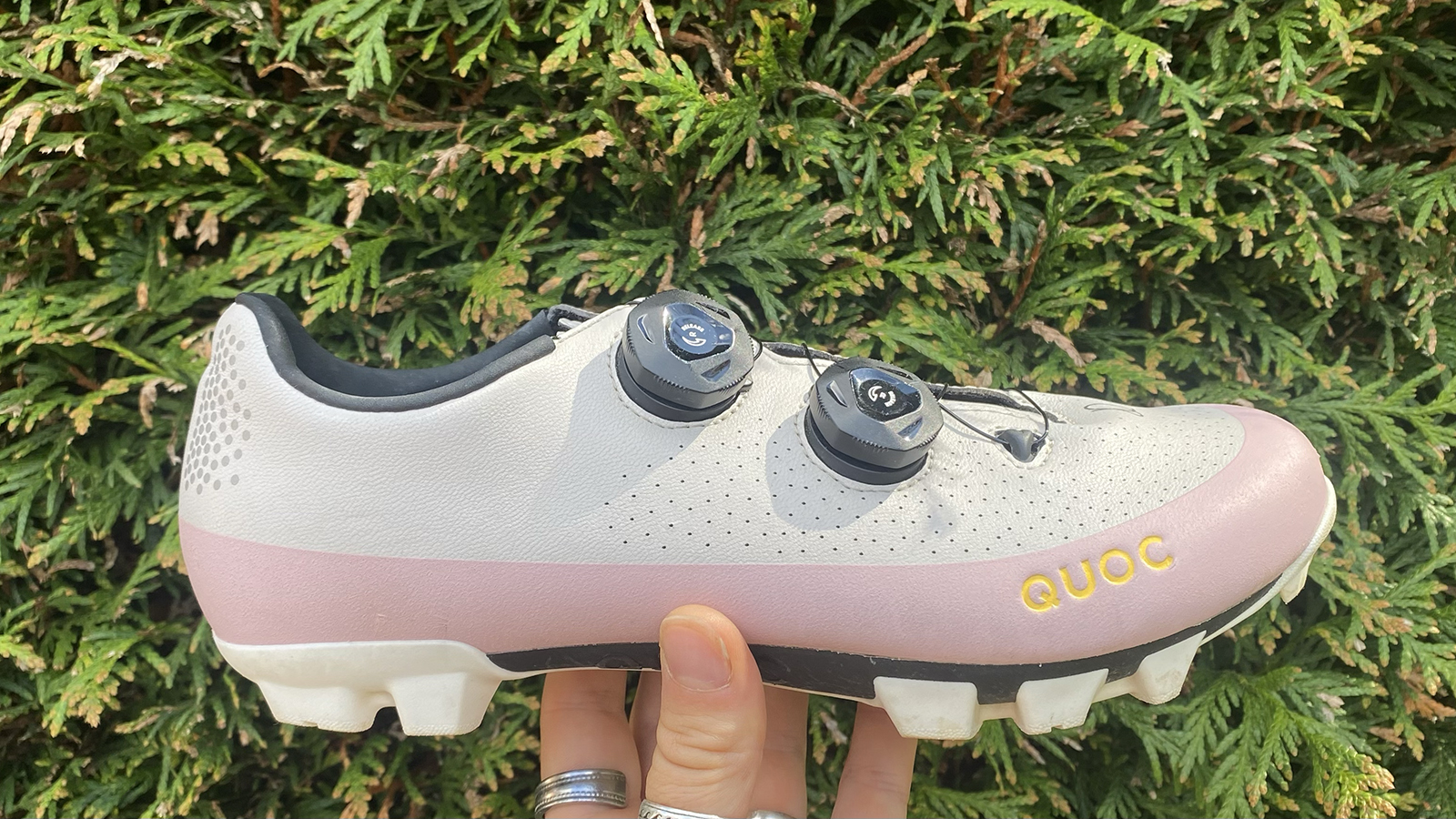
Specifications
Reasons to buy
Reasons to avoid
After four years of alterations and modifications since its first Gran Tourer shoe, the all-new Gran Tourer XC from Quoc was recently launched, and was put to the test by our tester – Amy Perryman, on the Rapha Pennine Rally. Amy gave them a 5-star review saying they "delivered a flawless performance" and "was a perfect durable gravel shoe, superbly capable over multiple days and long distances".
One of the Quoc’s standout features we noted made them so gravel adventure-ready was the Abrasion Resistant Microfiber. This combined with a newly added rubber toe cap makes them ideal for the best gravel bike adventures and gives them plenty of protection over the entire shoe and the rubber cap keeps those annoying toe scuffs at bay too.
One thing that I questioned was the color of the shoes, with the Dusty Pink color scheme looking as though it wouldn't retain its good looks for long, and looked more suited to summer riding rather than muddy winter slogs. However, Amy reported that due to the Abrasion Resistant Microfiber the shoes are fairly easy to wipe clean.
For more information, check out our Quoc Gran Tourer gravel shoe review.
| Attributes | Notes | Rating |
|---|---|---|
| Comfort | Flawless levels of comfort | ★★★★★ |
| Grip | Chunky rubber gives a ton of grip | ★★★★ |
| Fastening | Quoc Technology dual-dial system isn't perfect | ★★★ |
| Breathability | Outstanding at keeping feet cool on big summer rides | ★★★★★ |
| Value | Cost a fair bit but ticks a lot of boxes | ★★★ |
10. Best for winter
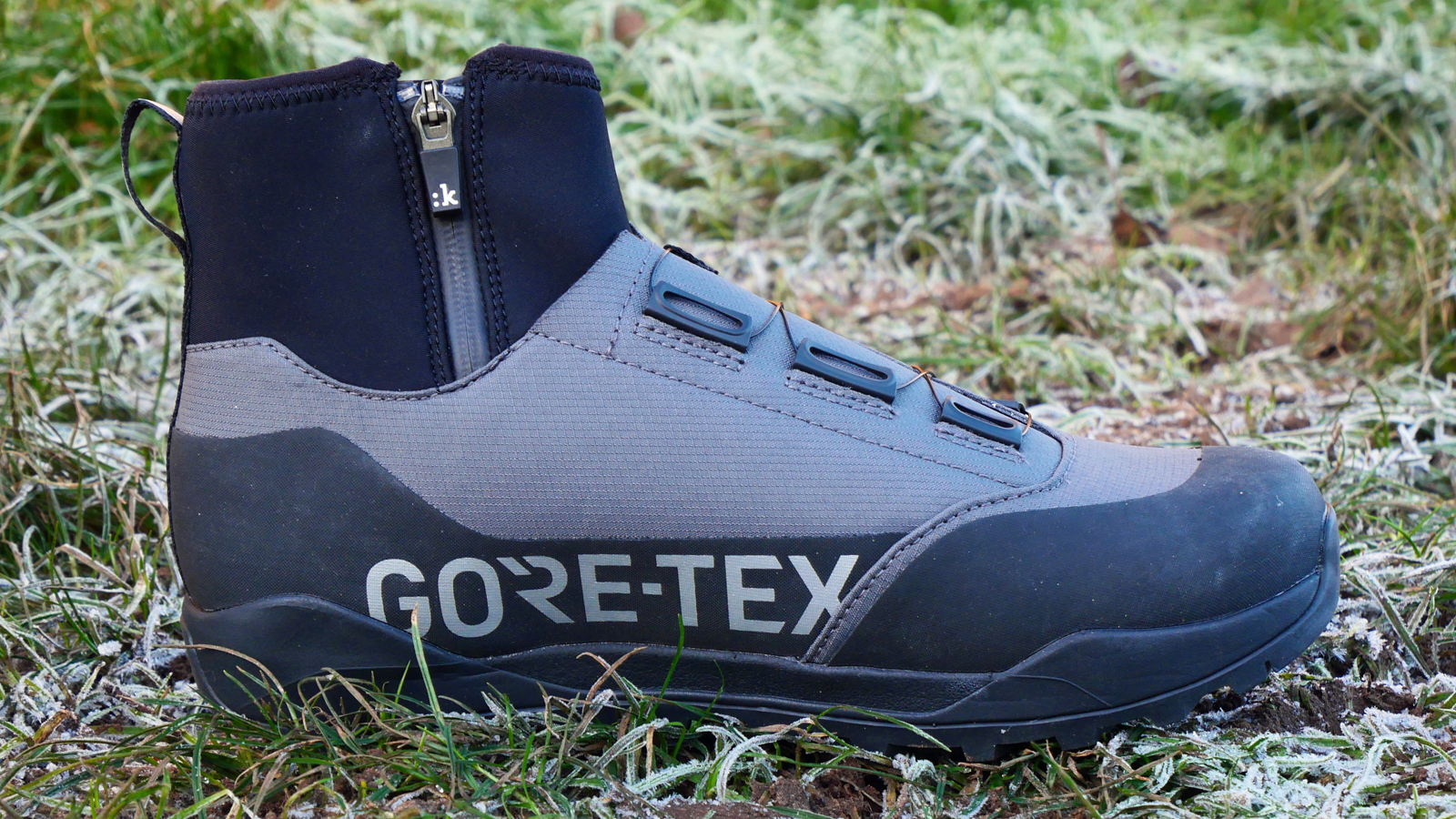
Specifications
Reasons to buy
Reasons to avoid
On test, Graham Cottingham was full of performance praise for the Fizik Terra Nanuq GTX winter boot, noting that they delivered superb warmth, waterproofing, and excellent breathability and therefore made them one of the best winter boots available.
Fizik released the Terra Nanuq GTX boots late last year, with its design and features aimed to be ready to tackle the worst of conditions, coming with a fully insulated fleece lining backed up with excellent waterproofing from Gore-Tex. They also feature a high ankle cuff, Boa fastening, and a chunky treaded Vibram sole.
Graham put the Terra Nanuq boots to the test in some seriously cold and wet conditions and reported that the Gore-Tex membrane kept his feet dry – even when fully submerged. Breathability was also impressive with little moisture buildup and properly toasty toes.
Winter hike-a-bike conditions can catch out some of the best of shoes, but Graham found the Vibram sole coped well, and was flexible enough to cope with tough walking conditions without losing out on power transfer. The tread offered plenty of grip and he had no problem scaling muddy, snowy, and slick grassy inclines.
For more details, have a read of our Fizik Terra Nanuq GTX review.
| Attributes | Notes | Rating |
|---|---|---|
| Comfort | A winter boot with plenty cozy comfort | ★★★★ |
| Grip | Vibram sole copes well in tough conditions | ★★★★ |
| Fastening | Single Boa does what it should | ★★★★ |
| Breathability | Gore-Tex delvers the goods easily | ★★★★ |
| Value | Costly but top winter performance always is | ★★★ |
11. Best of the rest
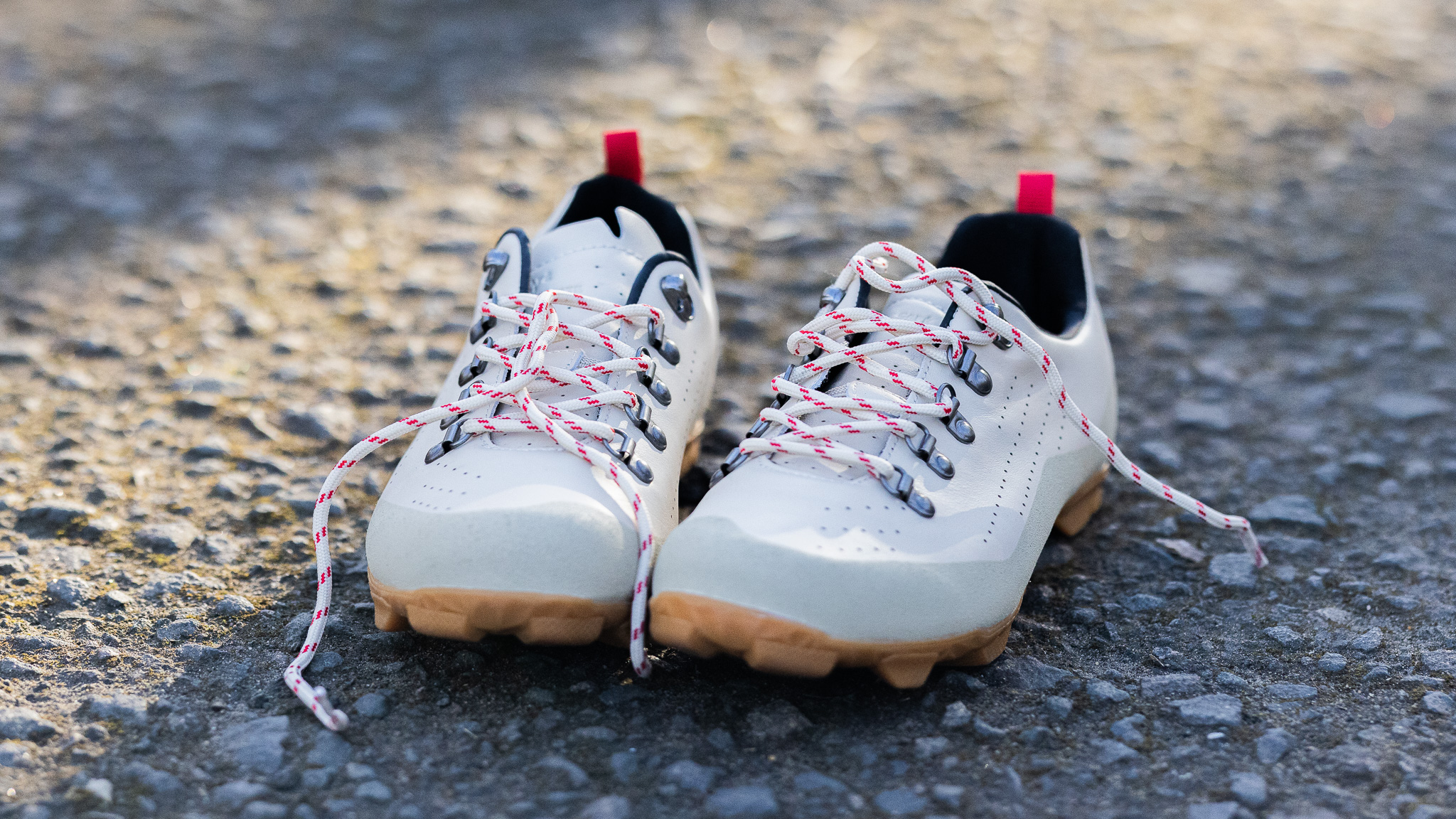
Café du Cycliste Outlands
Specifications
Reasons to buy
Reasons to avoid
French performance-wear brand Café du Cycliste is well known for creating some of the best cycling apparel with an added French twist of style and sophistication. They have taken all its clothing je ne sais quoi and added it to a brand new gravel shoe launched last year, along with an equally appealing road cycling shoe.
I've been using the Outlands sparingly because the main problem with them is – they look so good, I didn't want to get them covered in Scottish crud. However, on the rides I have had, the Outlands have delivered on all fronts and even eased my apprehension of using a laced shoe, with the stylish lacing system offering almost the same security as a Boa – just without the on-the-fly adjustment.
Elsewhere the good looks are backed up with performance features. Breathability is decent and the SUPtraction sole ticks all the boxes with the custom-designed rubber tread delivering plenty of grip. Power transfer again is top-notch with carbon footbeds giving a rigid feel but with still enough flex to mean they are easy to walk in too.
The full review of the Café du Cycliste Outlands will be coming very soon, so keep an eye open for that, if a laced shoe for the best gravel bike riding is on your radar.
| Attributes | Notes | Rating |
|---|---|---|
| Comfort | Robust and very comfortable | ★★★★ |
| Grip | SUPtraction sole is designed for gravel and works | ★★★★ |
| Fastening | The laced system delivers a refreshing alternative | ★★★★ |
| Breathability | Fairly minimal so could be better | ★★★ |
| Value | Super premium price | ★ |
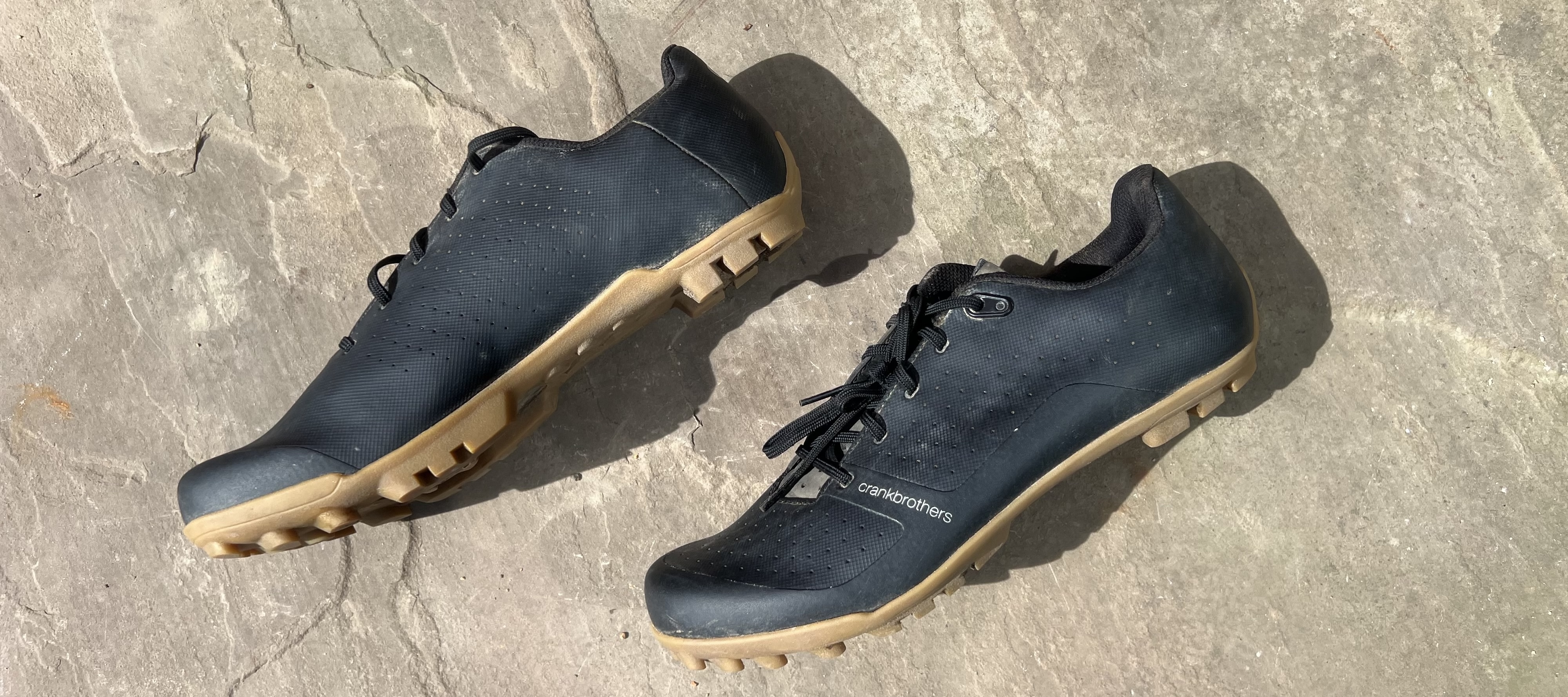
Specifications
Reasons to buy
Reasons to avoid
The Crankbrothers Candy Lace received a sweet review from Guy Kesteven and his overwhelming feedback on these shoes was the overall comfort and relaxed fit. Guy also loved the look of the Candy Lace shoes and said, "The Crankbrothers Candy Lace shoes take me right back to when I started riding. They’re up to date in comfort and performance, balanced for fast, all-day off-road riding on the best gravel bikes or XC MTB."
Like myself having recently loved the Specialized S-Works Recon Lace shoe, Guy loved the laced fastening system, and said, "Laces are a great idea in my view too, and the Candy shoes have secure laces that allow a much more accurate tensioning setup than a dial system, although not everyone will agree."
Elsewhere the Match MC1 rubber proved to be more than capable of providing plenty grip in the wettest of conditions and the natural curve of the sole tread and compliance in the shank make them comfy for walking in too.
The only negative was the weight and the Candy Lace shoes tipped the scales at 920g which made them fairly hefty when compared to the Rapha Explore shoes at 694g and the S-Works Recon at 624g – both laced fastening system shoes.
Check out Guy's full review of the Crankbrothers Candy Lace shoe for all the details.
| Attributes | Notes | Rating |
|---|---|---|
| Comfort | Supreme comfort | ★★★★ |
| Grip | The Match MC1 rubber sole is excellent | ★★★★ |
| Fastening | The laced system just works | ★★★★ |
| Breathability | Very good plenty perforations but let water in | ★★★ |
| Value | Compares well to most similar shoes | ★★★★ |
Buying tips
Although just about any shoe could be suitable for gravel riding including some of the best mountain bike shoes and even some of the best flat pedal shoes. I've listed a few points that are worth considering when picking your next pair of gravel shoes.
- 1. Fastening system and fit
- 2. Ventilation
- 3. Weight
- 4. Cost
1. Fastening system and fit
There are a few options to choose from when it comes to the fastening system, and comes down to your own personal preference and the gravel riding you do. Most shoes will have either Boa dials (or a brand's own equivalent), laces, Velcro fastening or a combination of these options.
A Boa dial gives superb on-the-fly adjustment, a tighter feeling fit, and can be more suited to gravel racing. A laced system can be equally suitable for racing, but also offers a more relaxed fit and can be a good bikepacking option, but the system you choose is really down to rider preference.
Fit can also vary from one brand to another, with narrower or wider widths, so again try before you buy.
2. Ventilation
The best gravel bike shoes will be designed to keep your feet cool and sweat free on the biggest days in the saddle. All the shoes featured in the guide feature some sort of perforation system or material that allows them to ventilate your feet.
It's also worth noting that the more the shoes are perforated, the more water they can potentially let in when riding in rain or through puddles.
3. Weight
A nice lightweight shoe is always a good choice and will help reduce fatigue and heat build-up in your feet. However, depending on the specs and the fastening system used the weight from shoe to shoe will vary a fair bit, but unless you're a gram counter then it's not a deal breaker on any of the gravel shoes listed in our guide.
4. Cost
In my opinion, cost is subjective, and it doesn't necessarily mean the most expensive shoe you're buying will be the best for your needs.
Our advice would be to check out all the features of the shoes you are considering, and how they compare for value. We think the Specialized Recon 1.0 represents tremendous value for the features, and if you're after a pair, then check out the live best deal prices at the bottom of this article.
FAQs
What shoes do you wear with gravel?
Because gravel biking can mean so many different things to different people you can’t assume a ‘gravel shoe’ will be exactly right for your version of the sport. That means you need to judge the various features against your actual needs.
If you're gravel racing you will want to look at a stiff lightweight shoe for ultimate power transfer and performance. A close fit is key in order to hold the foot in place and make the most of the stiff sole. Racey shoes will make sacrifices in walkability and protection. Stiff soles, small tread, and minimal uppers limit the amount of walking you want to be doing.
On the flipside, more adventure-based gravel shoes will feature broader, blockier, and softer treads to improve comfort in walking sections. Some shoes opt for softer soles, as stiff performance isn't as vital over multi-day trips, or a shorter carbon sole to allow the foot to bend more naturally. These adventure-based shoes usually have a more rugged construction and are happy to take on tougher off-road terrain.
One thing all gravel shoes will have in common is a two-bolt cleat mount as this is the standard that all the best gravel bike pedals use.
Can I wear MTB shoes on gravel bike?
In short, yes. A lot of the best MTB shoes cross over very well into gravel riding and have made it into this guide. That said, some of the more durable or heavy-duty shoes won't be able to compete in breathability or stiffness with dedicated gravel shoes.
Coming from the other side of the spectrum, road shoes are light and stiff however the cleat systems are prone to getting clogged with mud or stones. They are also terrible when walking due to the exposed and delicate road cleats.
How important is the sole?
The sole underlines the performance of every shoe, and the best gravel shoes will always be a compromise between pedaling stiffness and walking flexibility. Some shoes – like the Shimano listed here – just go straight for maximum rigidity for racers who only put their foot down on the start line and then again on the podium. Others – like the Fizik Terra Atlas, Specialized, and Rapha – have more flex and sometimes more sole curve so that getting miles in on foot feels fine. Tread can also vary from minimal, narrow and wobbly to properly aggressive and wide, so make sure you look at the whole package.
Should I choose Boa, lace, or Velcro fastenings?
Boa dials, ratchet straps, laces and Velcro straps all have their advantages and disadvantages.
We've tested a selection of the best gravel shoes that cover all the options, and hopefully help when it comes to selecting your gravel shoes. Our best overall is the Rapha Explore which has more of a traditional laced and Velcro fastening system. The brilliant Specialized S-Works Recon has a Boa fastening but Boa can be a more expensive option.
Why are some shoes so expensive?
Gravel is here to stay but still a fairly new segment and it’s attracting excited new riders who are rushing to buy the best gravel bikes and fancy new kit. Most brands are still introducing bells and whistles models at the top end as their initial option. That means our selections are skewed towards aspiration not affordable. However, our budget selection – the Specialized Recon 1.0 is well worthy of a look as a wallet-friendly shoe.
How we test gravel bike shoes
Our expert reviewers have put these gravel shoes through their paces on a range of trails, roads and everything in-between over many hours of hard riding to test them out for grip, support, fit, and comfort, plus their off-bike suitability.
Meet the testers

Guy started writing and testing for bike mags in 1996. Since then he’s written several million words about loads of gravel bikes and a ridiculous amount of off-road riding gear.
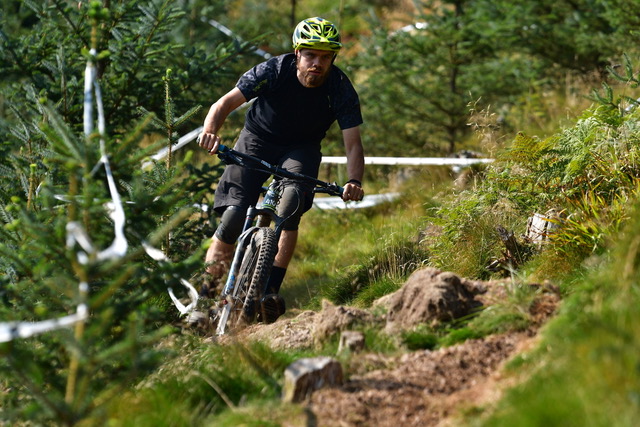
Graham is all about riding bikes off-road. Based in Edinburgh he has some of the best gravel riding on his doorstep. With almost 20 years of riding experience, he has dabbled in gravel racing and MTB racing.
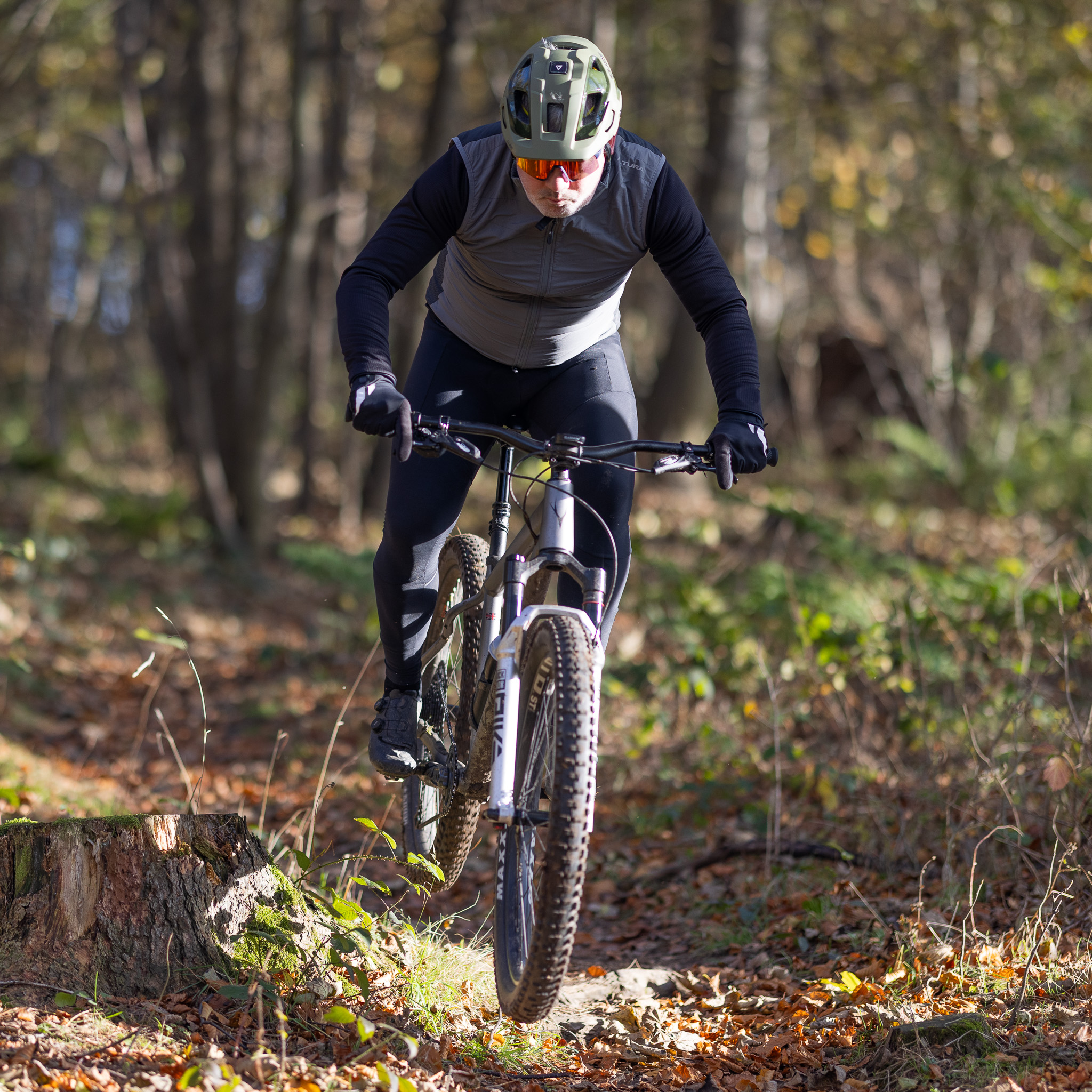
Paul is a huge cycling fan and riding all sorts of bikes, but is now mostly found riding gravel bikes, planning bikepacking trips and dreaming he still can cut it as a cyclocross racer.
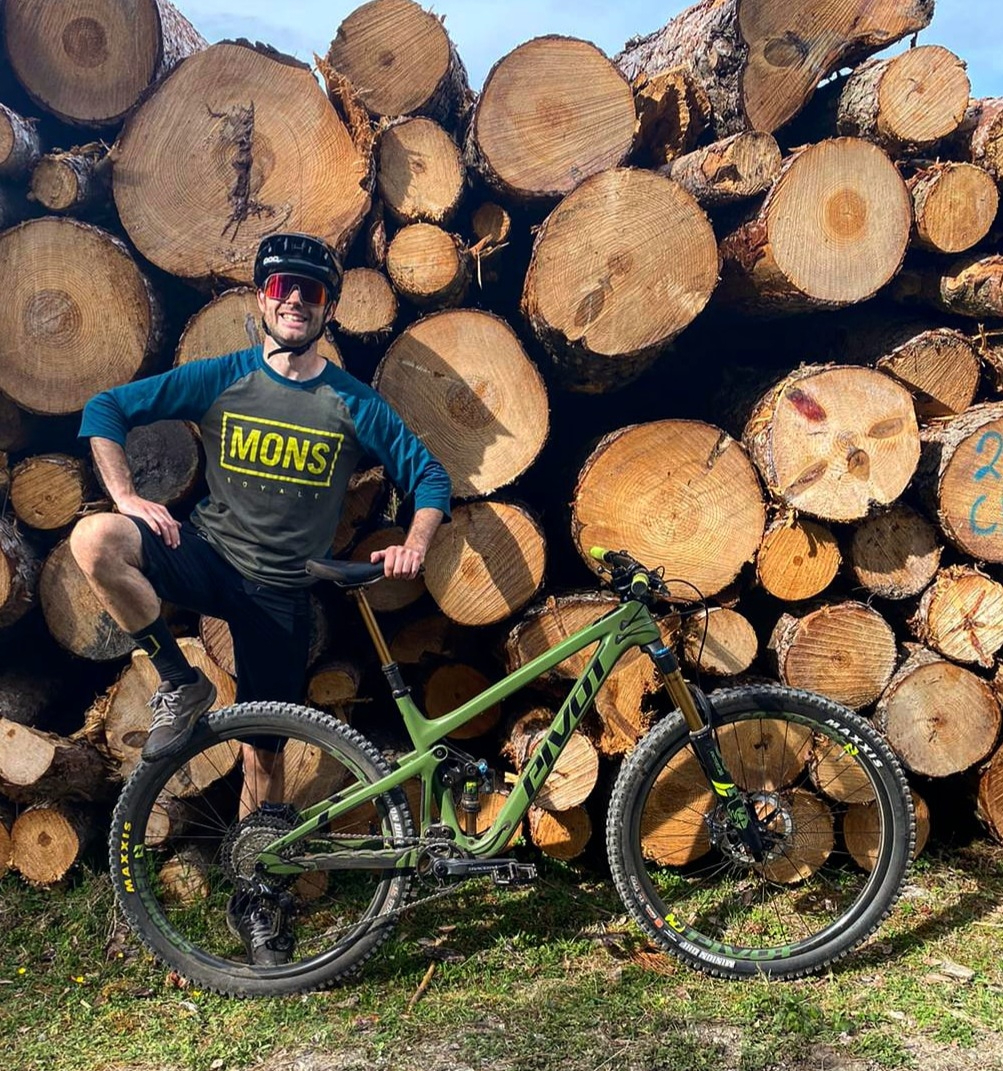
Dean is a freelance cycling journalist fortunate to have the New Forest National Park and the Isle of Purbeck on his doorstep. Riding gravel and MTB bikes has meant Dean has been fortunate to travel the world in search of the best off-road trails.

Amy competes at a high level in various disciplines including gravel racing, cyclocross, and MTB XC. She races CX for Montezuma's Race Team and throughout the summer gravel for the London-based team TEKKERZ CC.
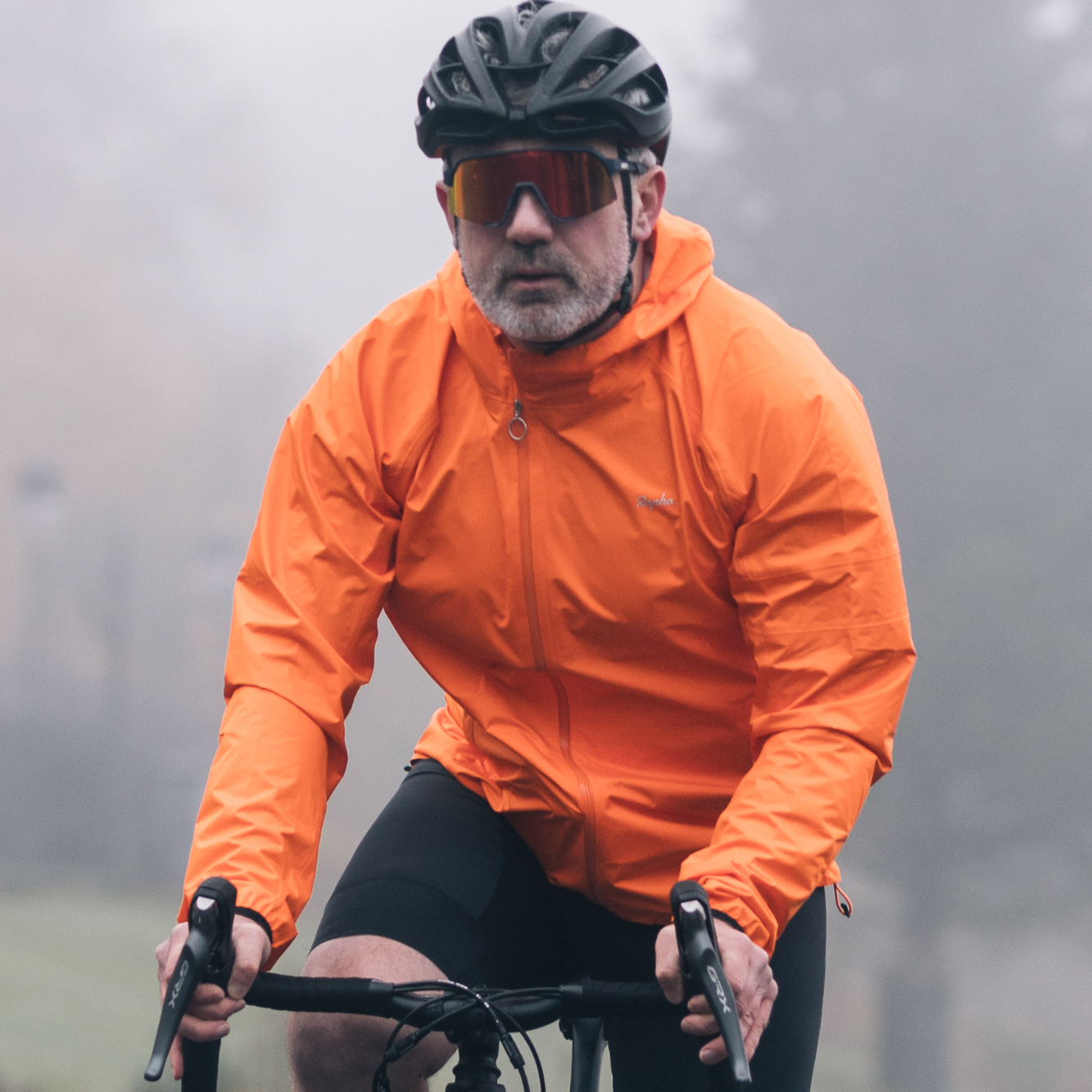
Paul Brett joined BikePerfect as a staff writer in 2022. He has been an avid cyclist for as long as he can remember, initially catching the mountain biking bug in the 1990s, and he raced mountain bikes for over a decade before injury cut short a glittering career. An award-winning photographer, when not riding a bike, he can be found at the side of a cyclocross track or a downhill mountain bike world championship shooting the action. Paul was the founder, editor and writer of Proper Cycling magazine, and he's traveled the world interviewing some of the biggest names in mountain biking and writing about some of the biggest cycling brands.
Current rides: Canyon Inflite, Specialized Diverge, Marin Alpine Trail 2
- Dean HerseyFreelance writer
- Amy PerrymanFreelance Writer
- Guy KestevenTechnical-Editor-at-Large
- Graham CottinghamSenior reviews writer, Bike Perfect
